SPECIAL TOPIC—Non-equilibrium quantum many-body systems

2021, 70 (23): 230306.
doi: 10.7498/aps.70.20211687
Abstract +
With the recent development of experimental technology, the ability to control the dissipation in quantum many-body system is greatly enhanced. Meanwhile, many new breakthroughs are achieved in detecting the quantum states and others. All these advances make it necessary to establish a new theory for calculating the dissipative dynamics in strongly correlated sstems. Very recently, we found that by taking the interactions between the system and the bath as a perturbation, a systematic dissipative response theory can be established. In this new approach, the calculation of dissipative dynamics for any physical observables and the entropies can be converted into the calculation of certain correlation functions in initial states. Then we discuss how Markovian approximation at low temperature limit and at high temperature limit can be reached Also, we review the progress of the dissipative dynamics in open Bose-Hubbard model. In the fourth section, we review recent progress of entropy dynamics of quench dynamics of an open quantum system. Finally, we draw a conclusion and discuss possible development in the future.
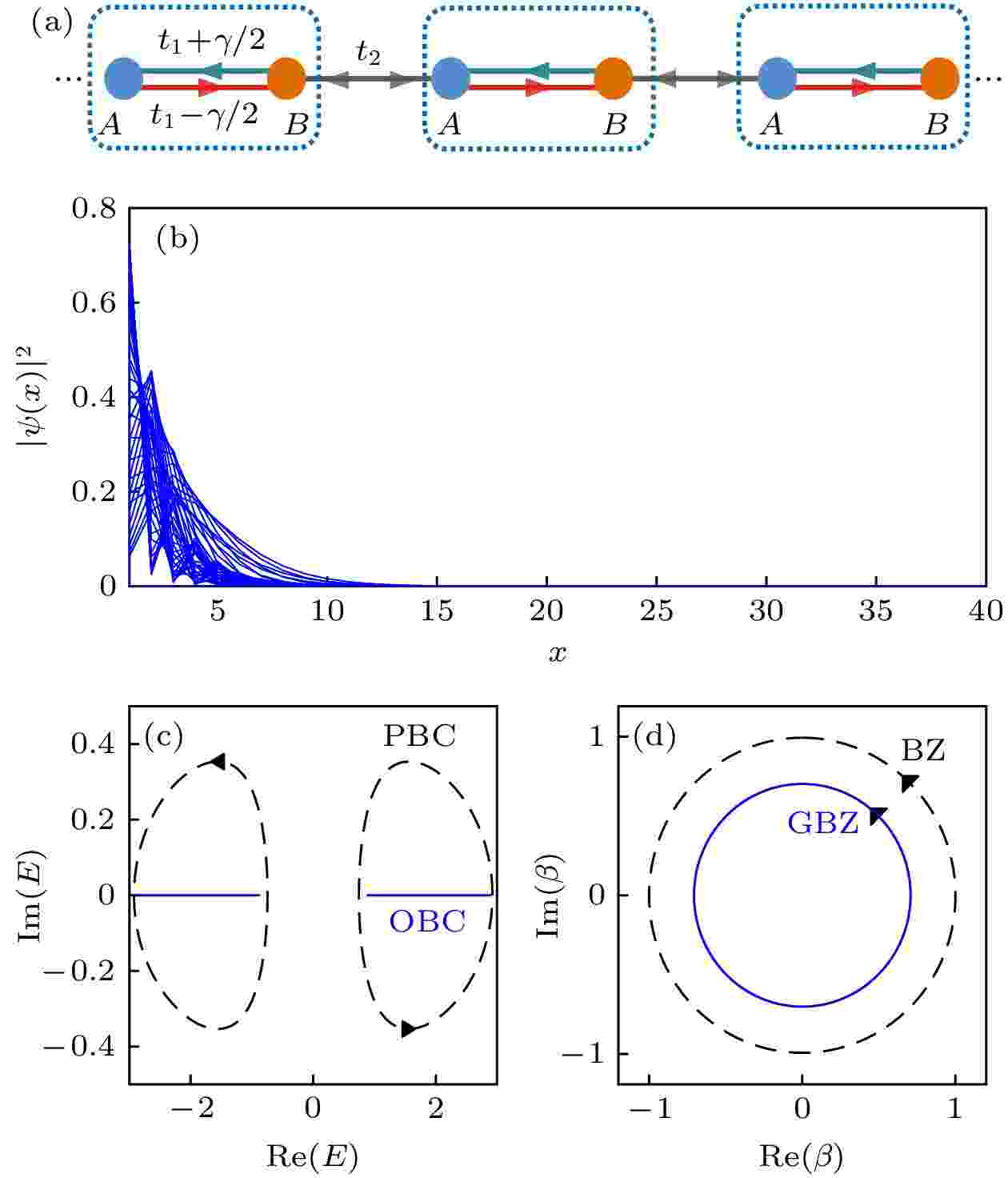
2021, 70 (23): 230307.
doi: 10.7498/aps.70.20211908
Abstract +
The energy band theory is one of the cornerstones of condensed matter physics. It also has wide applications in other branches of physics. Recently, a number of questions from non-Hermitian physics call for a generalization of energy band theory to non-Hermitian systems. In the study of non-Hermitian topological states, it has been found that such a generalization necessitates redefinitions of certain fundamental concepts of band theory. In particular, the non-Hermitian skin effect (NHSE) causes the breakdown of Bloch-band picture and conventional bulk-boundary correspondence. To calculate the energy spectra and define topological invariants, the standard Brillouin zone gives way to the generalized Brillouin zone (GBZ). Many intriguing non-Hermitian phenomena, including the non-Hermitian skin effect, can be precisely characterized in terms of the generalized Brillouin zone. The non-Hermitian band theory based on the concept of generalized Brillouin zone, now generally known as the non-Bloch band theory, has successfully described and predicted a number of novel non-Hermitian phenomena. The present article provides a brief introduction to the main concepts of non-Bloch band theory, and its applications in the non-Hermitian bulk-boundary correspondence, Green’s functions, wave dynamics, chiral damping, and non-Bloch parity-time symmetry.
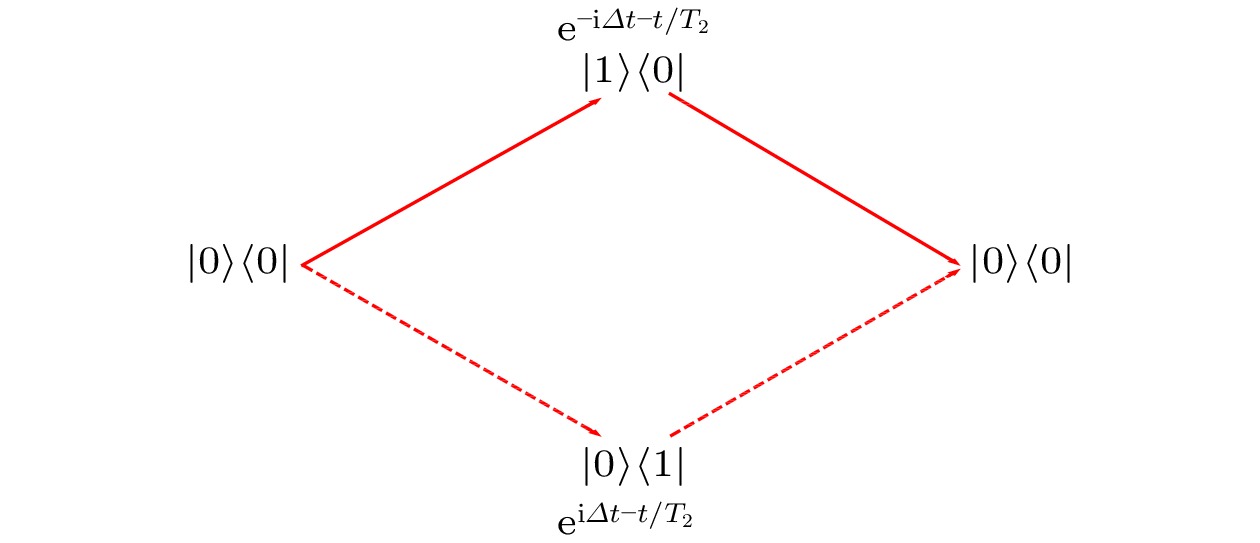
2021, 70 (23): 230308.
doi: 10.7498/aps.70.20211556
Abstract +
Two-dimensional coherent spectroscopy (2DCS) diagnoses a material’s nonlinear optical response with multiple time variables, thus offering information that is inaccessible with conventional linear optical spectroscopy. The 2DCS in the infrared, visible, and ultraviolet frequency range has yielded fruitful results in chemistry and biology. In the terahertz (THz) frequency window, 2DCS has shown its promise in the study of strongly-correlated electronic systems. As a guide to this rapidly developing field, we survey the current status of the theory of THz-2DCS in strongly-correlated electronic systems. We then introduce the basic concepts and theoretical methods of 2DCS, and analyze the main characteristics of the two-dimensional spectra. Finally, we summarize our latest theoretical research in this field.

2021, 70 (23): 230310.
doi: 10.7498/aps.70.20211741
Abstract +
Non-equilibrium quantum many-body systems have attracted considerable attention in the past decades. The scope of the research of this kind of novel system involves interdisciplinary research of condensed matter, atomic and molecular physics, quantum optics, quantum information and quantum computation, as well as the non-equilibrium statistical physics. The non-equilibrium phenomena emerging from the aforementioned quantum systems can exhibit rich and universal behaviors, which have far from being well understood due to the novelties and complexities of these systems, and hence the quantum many-body physics becomes the research highlight. At the same time, with the rapid development of quantum techniques, the understanding of these complex systems is of important practical significance due to their potential applications in quantum computation and quantum manipulation. In this paper, we show our recent progress of non-equilibrium quantum many-body systems. We focus on the novel phenomena closely related to the temporary symmetry breaking, including the exotic quantum matter, quasi-particles as well as the dynamical universality classes in non-equilibrium quantum many-body systems.
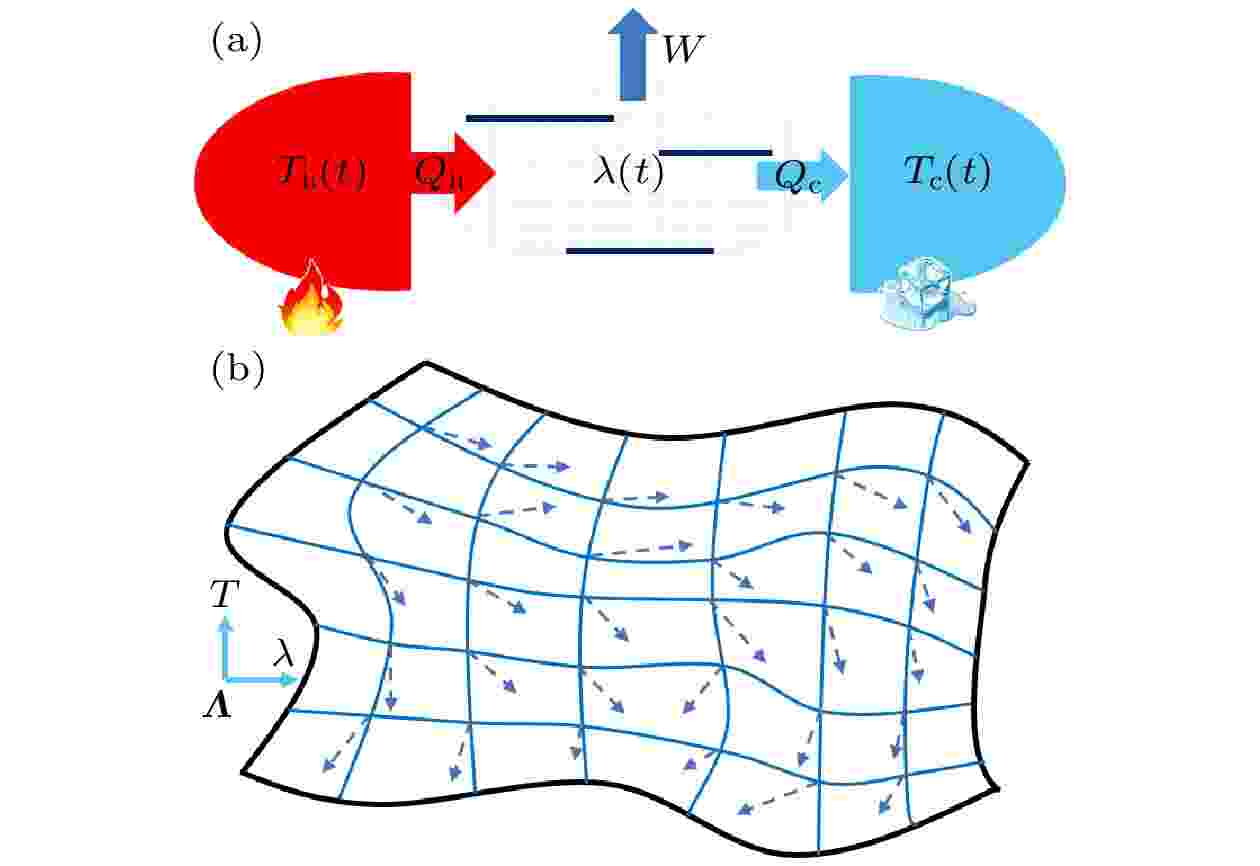
2021, 70 (23): 230503.
doi: 10.7498/aps.70.20211723
Abstract +
With the in-depth understanding of nano-/micro-scaled systems and the developing of the corresponding experimental techniques, the heat transport and energy conversion processes in these small systems have attracted much interest recently. In contrast to the static manipulation methods, which hinge on the steady nonequilibrium sources such as temperature bias, chemical potential difference, etc., the temporal driving methods can control small systems in nonequilibrium non-steady states with much more versatility and universality. The research on periodically driven small systems holds both fundamental and pragmatic promises. This review is based on the fundamental concept of geometry. By analyzing the geometric phase and thermodynamic length in the transport process and the energy conversion process, we provide a unified perspective for the recent researches on the thermodynamic properties of driven nonequilibrium quantum systems. Thermodynamic geometry not only is the intrinsic origin of the nontrivial transport and dissipation, but also provides us with an all-applicable theoretical framework. The discussion over the geometry would yield multiple thermodynamic constraints on the transport and energy conversion, and can naturally construct a general optimization method as well. This will conduce to a better understanding of functionality for nonequilibrium quantum many-body systems acting as thermal machines. Also, this will inspire people to design quantum thermal machines with simultaneously more ideal performance, i.e. higher efficiency, higher power and higher constancy.
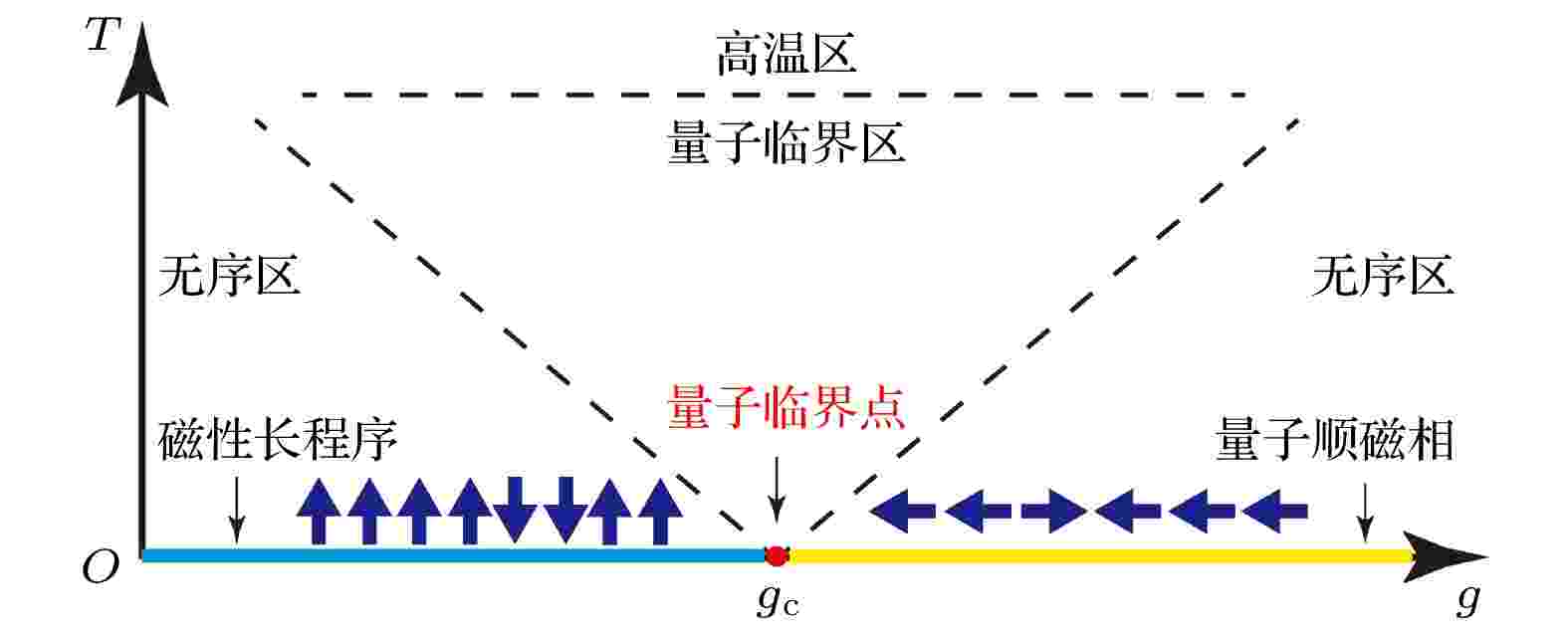
2021, 70 (23): 230504.
doi: 10.7498/aps.70.20211836
Abstract +
This review reports a series of theoretical and experimental progress on researches of the transverse field Ising chain (TFIC) and the quantum E8 integrable model. For the TFIC, on one hand, a unique exotic quantum critical behavior of Grüneisen ratio (a ratio from magnetic or thermal expansion coefficient to specific heat) is theoretically established; on the other hand microscopic models can accommodate the TFIC universality class are substantially expanded. These progresses successfully promote a series of experiments collaborations to first-time realize the TFIC universality class in quasi one-dimensional anti-ferromagnetic material BaCo2V2O8 and SrCo2V2O8. For the quantum E8 integrable model, the low temperature local dynamics and the dynamical structure factor with zero transfer momentum of this system are analytically determined, where a cascade of edge singularities with power-law divergences are obtained in the continuum region of the dynamical structure factor. After combining with detailed quantum critical scaling behaviors analysis and large scale iTEBD calculation, it successfully facilitates a series of experiments, including THz spectrum measurements, inelastic neutron scattering and NMR experiments, to realize the quantum E8 integrable model in BaCo2V2O8 for the first time. The experimental realization of the quantum E8 integrable model substantially extends the frontiers of studying quantum integrable models in real materials. The series of progress and developments on the TFIC and the quantum E8 integrable model lay down a concrete ground to go beyond quantum integrability, and can inspire studies in condensed matter systems, cold atom systems, statistical field theory and conformal field theory.
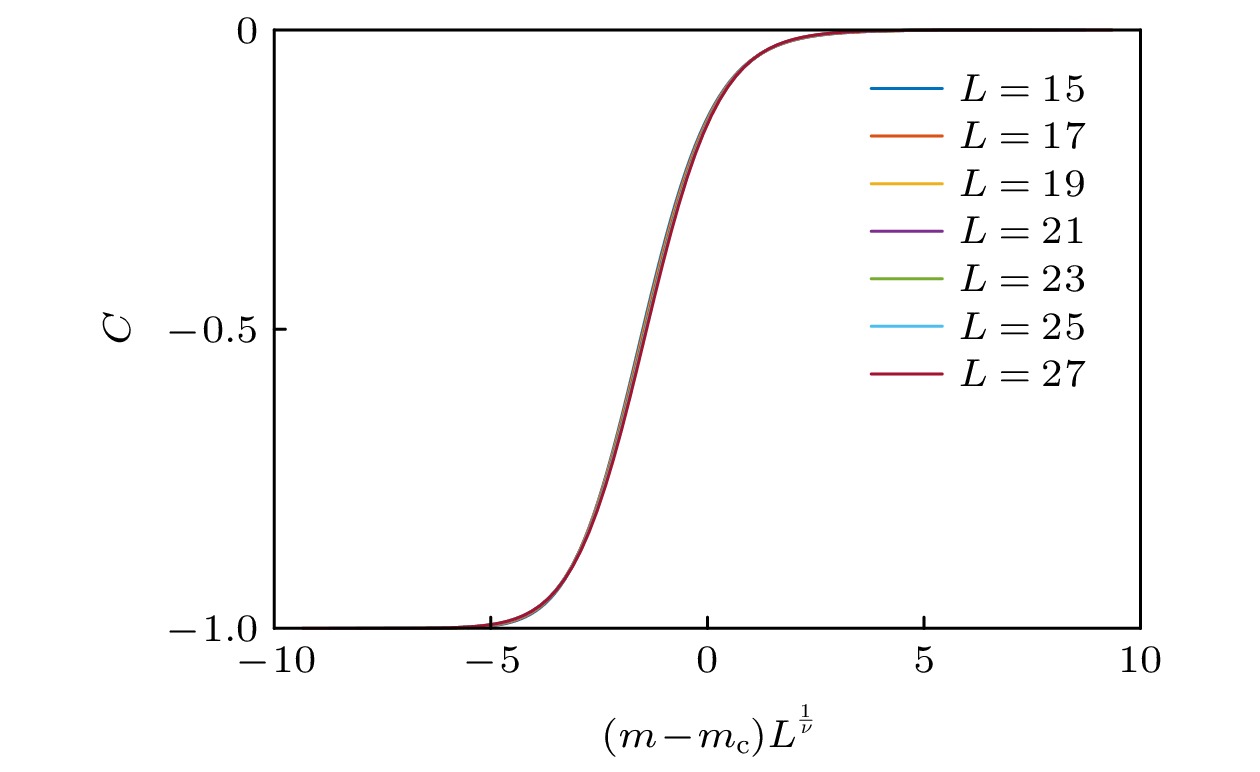
COVER ARTICLE
2021, 70 (23): 230309.
doi: 10.7498/aps.70.20211576
Abstract +
SPECIAL TOPIC—Nano engineering and thermophysics
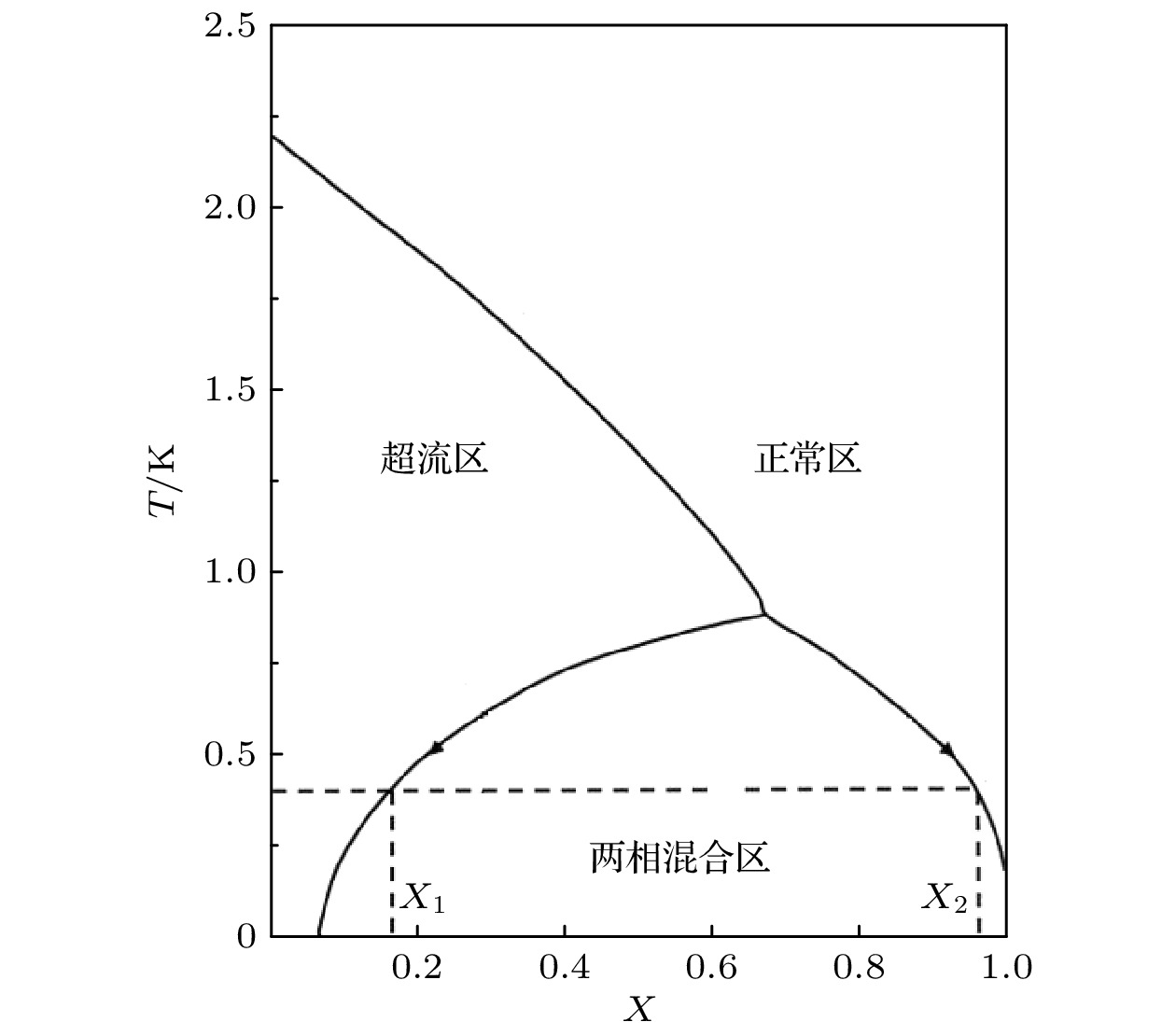
2021, 70 (23): 230202.
doi: 10.7498/aps.70.20211760
Abstract +
In the research of cryogenic physics and quantum information science, it is essential to maintain a steady low temperature of millikelvin regime continuously. Dilution refrigerator is a widely used refrigeration device to achieve extremely low temperature. It utilizes the phase separation effect of superfluid 4He and its isotope 3He mixed solution at ultra-low temperatures. The performance of heat exchanger is the key factor to determine the performance of continuous cycle refrigerating machine. At extremely low temperatures, there appears a huge interfacial thermal resistance between helium and metal (Kapitza resistance), and the problem of heat exchange can be effectively solved by using the porous sintered metal particles to increase the contact area. Therefore, it is of significance to study the heat exchange between metal particles and liquid helium at extremely low temperature and to develop the relevant high-performance sintered Ag powder heat exchanger.
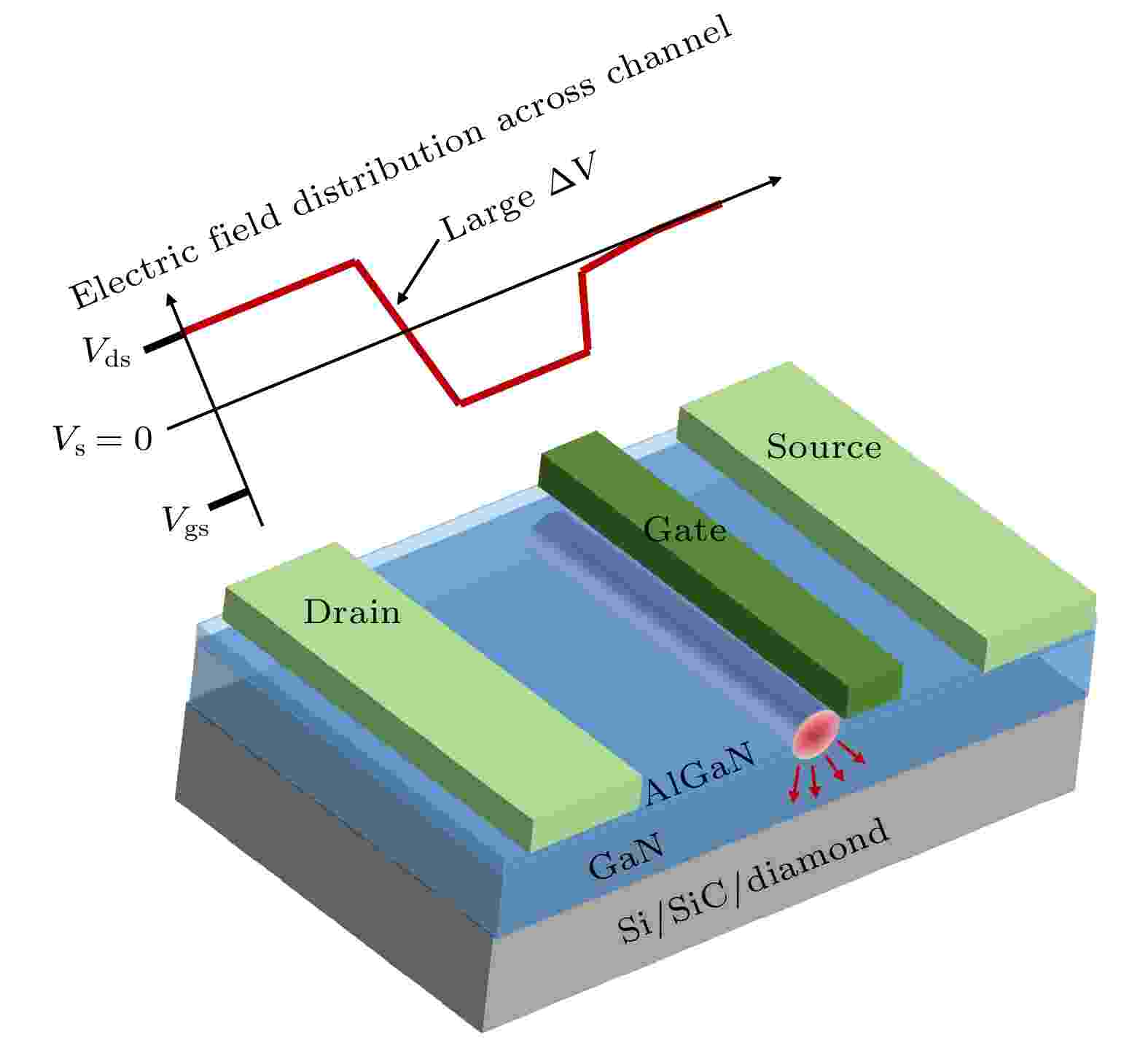
2021, 70 (23): 236502.
doi: 10.7498/aps.70.20211662
Abstract +
The history of semiconductor materials is briefly reviewed in this work. By taking GaN-based high electron mobility transistor as an example, the heat generation mechanisms and thermal management strategies of wide bandgap semiconductor devices are discussed. Moreover, by taking β-Ga2O3 as an example, the thermal management challenges of emerging ultrawide bandgap semiconductors are briefly discussed. The following discussions focus on the interfacial thermal transport which widely exists in the semiconductor devices mentioned above. The recent advancements in room-temperature wafer bonding for thermal management applications are summarized. Furthermore, some open questions about the physical understanding of interfacial thermal transport are also mentioned. Finally, the theoretical models for calculating thermal boundary conductance are reviewed and the challenges and opportunities are pointed out.
GENERAL

2021, 70 (23): 230201.
doi: 10.7498/aps.70.20210802
Abstract +
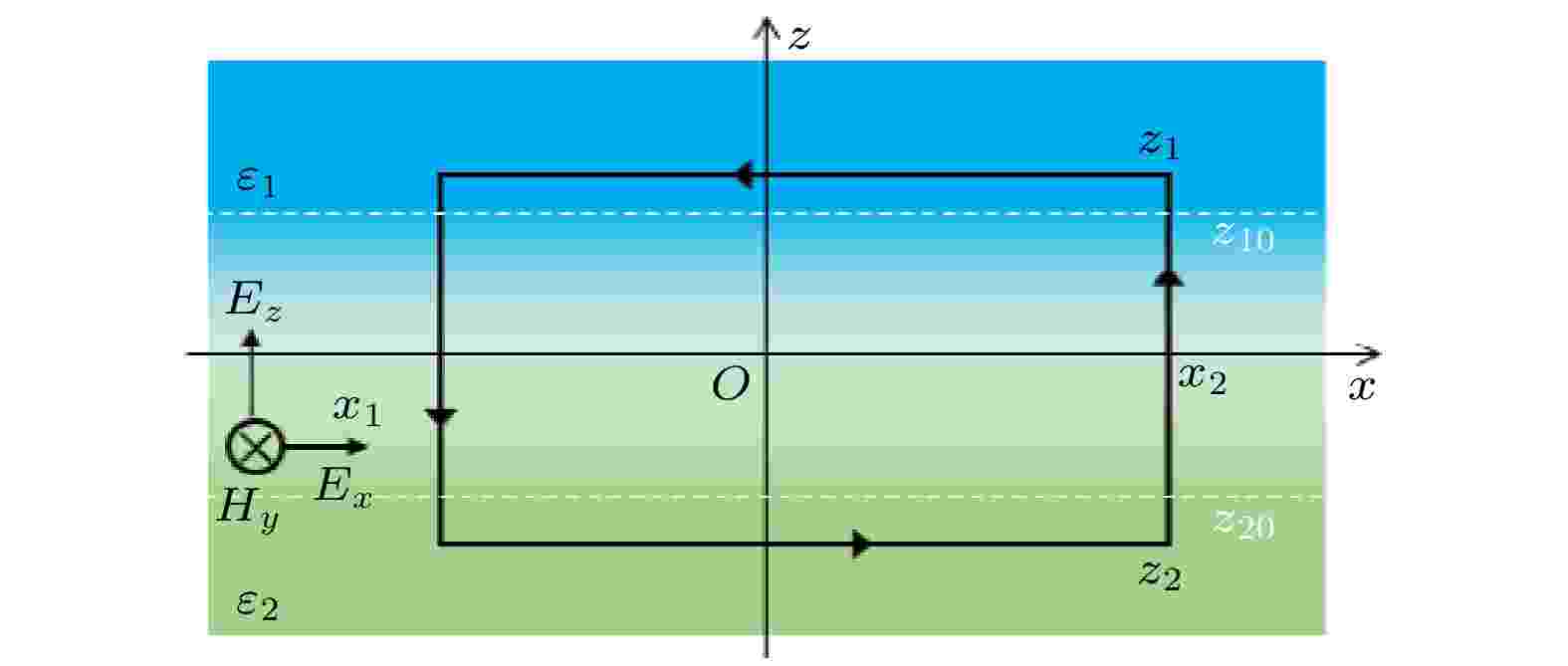
2021, 70 (23): 230301.
doi: 10.7498/aps.70.20211025
Abstract +
The electromagnetic boundary conditions have great important applications in many physical branchs. Here, the nanoscale electromagnetic boundary conditions are derived by using the integral Maxwell’s equations through constructing the dielectric transition layer across the interface between the two materials. The two interface response functions are obtained to reflect the electromagnetic field response characteristics of the interface. Based on the Maxwell’s equations, the physical meanings of the interface response functions are given as the position of the equivalent interfacial polarization charge and the gradient position of interfacial polarization current density, respectively. The influence of the dielectric constant of the medium, the transition line shape of the electric field and the frequency on the interface response functions are analyzed. When the material scale is large, the interface response function can be ignored, and the nanoscale electromagnetic boundary conditions degenerate to the classical boundary conditions given by the abrupt junction. On this basis, the interface electric dipole moment, the equivalent interfacial polarization charge area density, the equivalent interfacial polarization current density and the equivalent interfacial magnetic current density are introduced, leading to three forms of nanoscale electromagnetic boundary conditions. The results provide a clear physical picture and necessary theoretical basis for nanoscale electromagnetism and interface optics.

EDITOR'S SUGGESTION
2021, 70 (23): 230302.
doi: 10.7498/aps.70.20211255
Abstract +
In recent years, image encryption technology has attracted much attention. As people pay more attention to communication privacy and network security, the requirements for information encryption technology are more stringent. As one of the information carriers, images are valuable for carrying the effectiveness and vividness of the information. This paper proposes a color image encryption algorithm based on DNA encoding and alternating quantum random walk. Quantum random walk is an excellent cryptographic tool that participates in all parts of the algorithm process, and DNA encoding is used as the core encryption method to complete the algorithm. This article describes the encryption and decryption process in detail, and conducts simulation experiments to verify and analyze the results of the proposed algorithm. In the simulation stage, we design the simulation key parameters, encode the color image encryption and decryption experiments, and carry out related analysis. The experimental results show that the color image encryption algorithm proposed in this paper can perform safe and effective color image encryption. The correlation analysis shows that the image histogram after encryption is stable, the pixel correlation coefficient approaches 0, and the key space is ${2^{ 128 }} $ , the three-channel information entropy reaches more than 7.997, which can resist statistical attacks, brute force attacks and other attack methods. In addition, DNA coding has unique biological characteristics in addition to the novel coding and calculation methods, which provide new ideas and directions for cryptographic research.
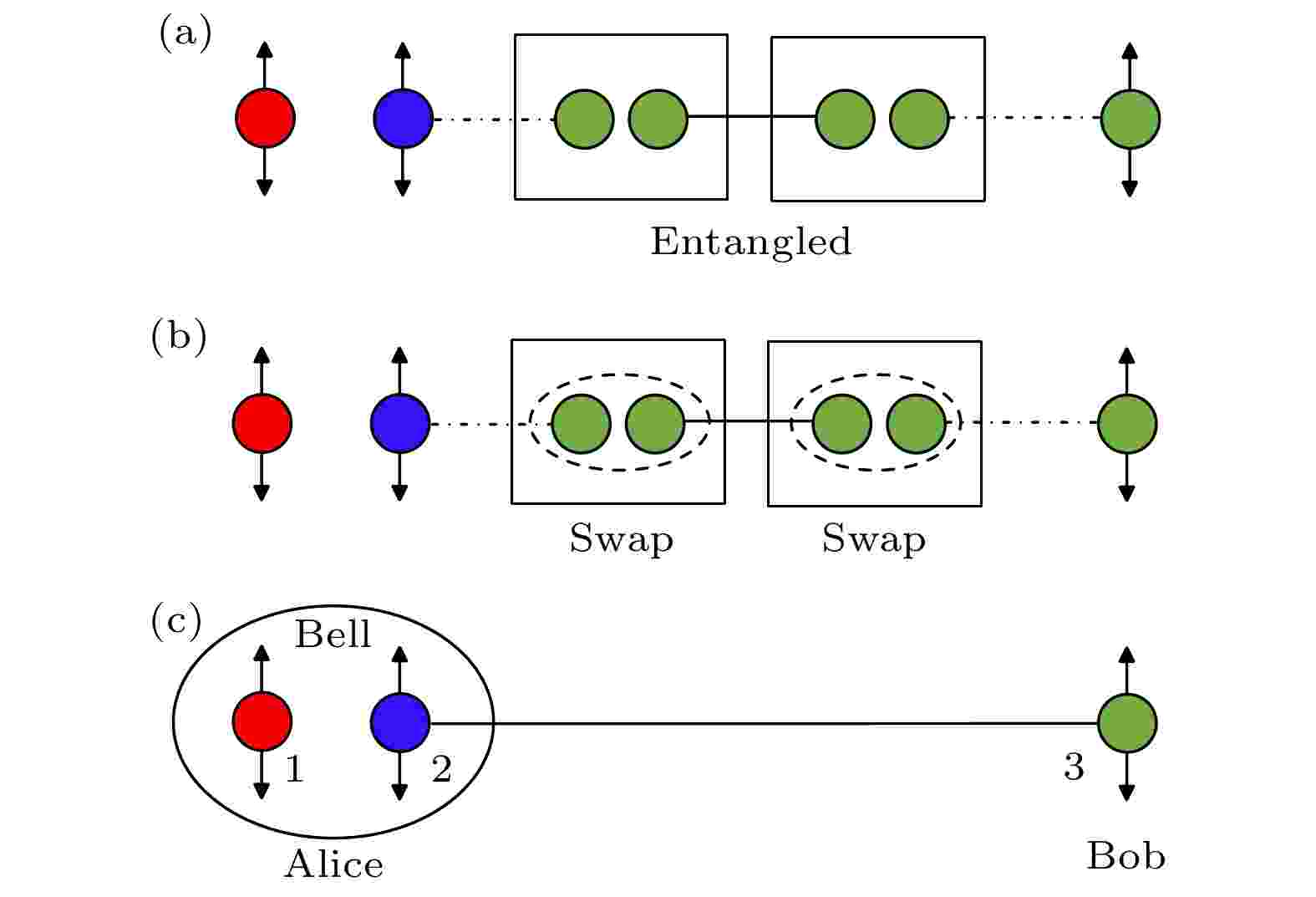
2021, 70 (23): 230303.
doi: 10.7498/aps.70.20211211
Abstract +
The decoherence of entanglement states stored in quantum memory is a major obstacle when implementing a quantum repeater. So far, the electron spins in quantum dots are usually utilized to construct entangled states in quantum repeater. In the quantum repeater process, the distance between quantum dots is large, so the interaction between them can be neglected. Thus the hyperfine interaction between the electron spin and its neighbor nuclear spins in the quantum dot is considered to be the main reason for the decoherence of the system. In early researches, the hyperfine interaction between the electron spin and its neighbor nuclear spins was considered as an effective magnetic field whose magnitude and direction are random and the magnitude follows the Gaussian distribution. In this paper, we simultaneously consider an applied magnetic field and the interaction between the electron spin and its neighbor nuclear spins, and investigate the decoherence of the quantum repeater of two quantum dots. We first solve the time evolution of the system by the numerical method, and the result shows that when the applied magnetic field is increased to a certain value, the four Bell states can be divided into two kinds, each with two Bell states. The system cannot transit from the Bell state in one kind to that in the other kind, but can transit between two Bell states with in the same kind. This effectively improves the fidelity of the initial state and suppresses the decoherence of the system. For a given applied magnetic field with large magnitude, we theoretically study the effect of the fluctuation of nuclear spin on the entangled state, and give an analytical expression for each of the fidelity and the decoherence time of the initial state. We show that the decoherence times of the four Bell states are the same, but the time evolutions of the Bell states belonging to different kinds are different obviously. The fidelity of two Bell states not only decays exponentially but also oscillates rapidly, so such two Bell states are difficult to be manipulated and not suggested in quantum repeater process. The results in this paper are expected to provide theoretical suggestions for selecting the entangled states in quantum repeater.

2021, 70 (23): 230304.
doi: 10.7498/aps.70.20211028
Abstract +
The mission planning problem in command and control organization can be mapped into a combinatorial optimization problem with many variables and is difficult to solve. The traditional heuristic list planning method faces the problems of high time complexity and poor real-time response. For the mission planning problem in command and control organization, a quantum circuit solution scheme is proposed based on quantum approximate optimization algorithm in this work. Firstly, the mission planning problem is transformed into a typical combinatorial optimization problem, the exact coverage problem. Then, by constructing the corresponding mathematical model, the final state Hamiltonian expression of the quantum approximate optimization algorithm for the exact coverage problem is derived. The quantum circuit based on the quantum approximate optimization algorithm is designed. Finally the parameters in the quantum logic gate are optimized by the momentum gradient descent algorithm, and the simulation experiment is carried out by using the quantum software development environment of the Origin Quantum Computing Company. The simulation results show that the quantum circuit scheme can be used to solve the mission planning problem, reduce the time complexity of the algorithm, and improve the resource utilization to a certain extent. This work lays the foundation for further application of quantum algorithm to solving the mission planning problem in command and control organization.

2021, 70 (23): 230305.
doi: 10.7498/aps.70.20210963
Abstract +
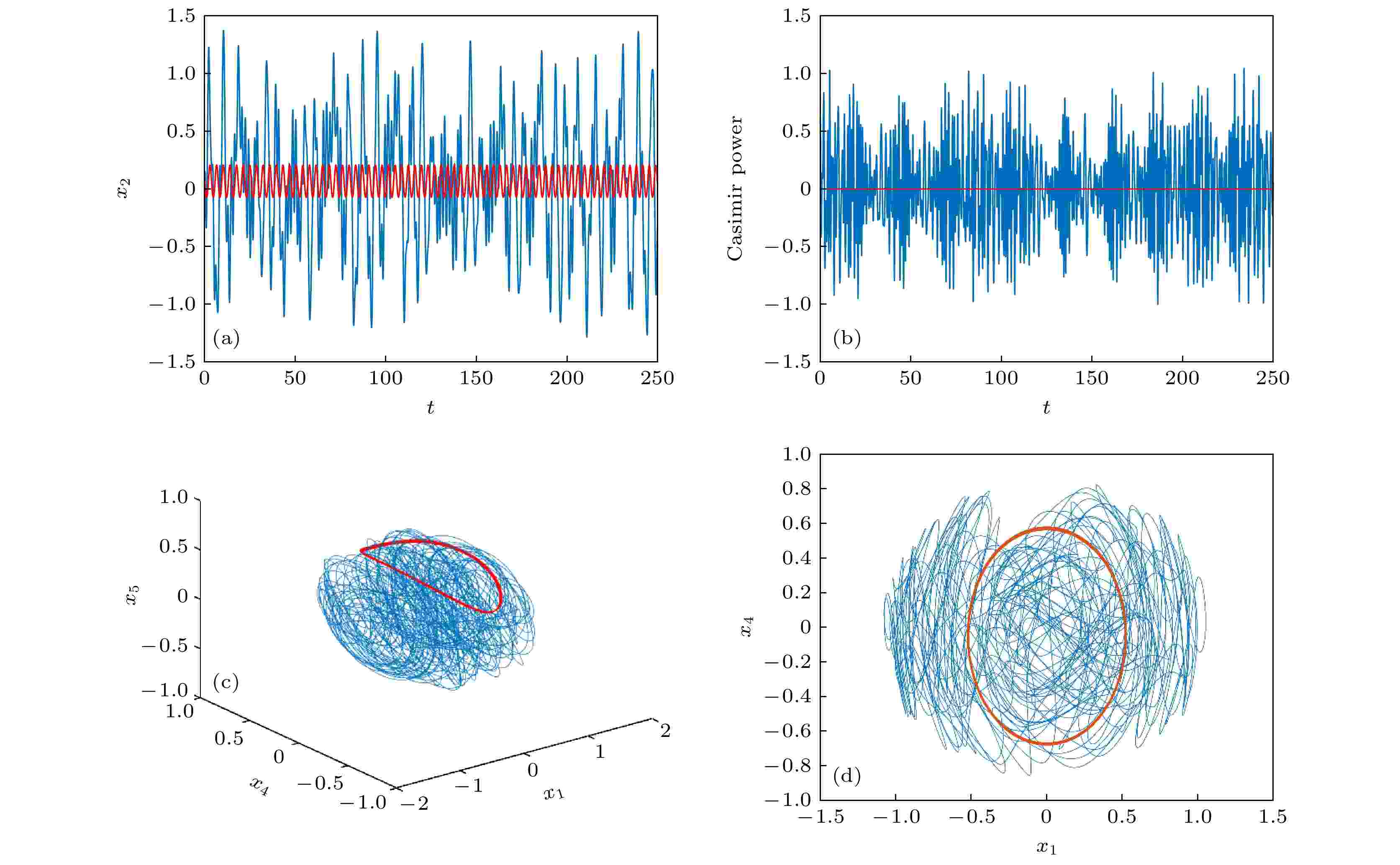
2021, 70 (23): 230501.
doi: 10.7498/aps.70.20210592
Abstract +
Conservative systems have no attractors. Therefore, compared with common dissipative systems, conservative systems have good ergodicity, strong pseudo-randomness and high security performance, thereby making them more suitable for applications in chaotic secure communication and other fields. Owing to these features, a new five-dimensional conservative hyperchaotic system with a wide parameter range is designed. Firstly, the Hamiltonian energy and Casimir energy are analyzed, showing that the new system satisfies the Hamiltonian energy conservation and can generate chaos. Next, the dynamic analysis is carried out, including conservativeness proof, equilibrium point analysis, Lyapunov exponential spectrum, and bifurcation diagrams analysis, thereby proving that the new system has the characteristics of conservative system and can always maintain a hyperchaotic state in a wide parameter range. At the same time, the phase diagram and Poincaré section diagram of the new system in a wide parameter range are compared. The results show that the randomness and ergodicity of the system are enhanced with the increase of parameters. Then, the NIST test shows that the chaotic random sequences generated by the new system in a wide parameter range have strong pseudo-randomness. Finally, the circuit simulation and hardware circuit experiment of the conservative hyperchaotic system are carried out, which proves that the new system has good ergodicity and realizability.

2021, 70 (23): 230502.
doi: 10.7498/aps.70.20210561
Abstract +
To improve the security of image encryption in singular chaotic systems, an encryption algorithm based on deep-learning is proposed in this paper. To begin with, the chaos sequence is generated by using a hyperchaotic Lorenz system, prior to creating new chaotic signals based on chaotic characteristics obtained from he simulations of the powerful complex network structure of long-short term memory artificial neural network (LSTM-ANN). Then, dynamic characteristics of the new signals are analyzed with the largest Lyapunov exponent, 0-1 test, power spectral analysis, phase diagrams and NIST test. In the end, the new signals are applied to image encryption, the results of which verify the expected increased difficulty in attacking the encrypted system. This is attributable to the differences of the new signals generated using the proposed method from the original chaotic signals, as well as arises from the high complexity and nonlinearity of the system. Considering its ability to withstand common encryption attacks, it is hence reasonable to conclude that the proposed method exhibits higher safety and security than other traditional methods.
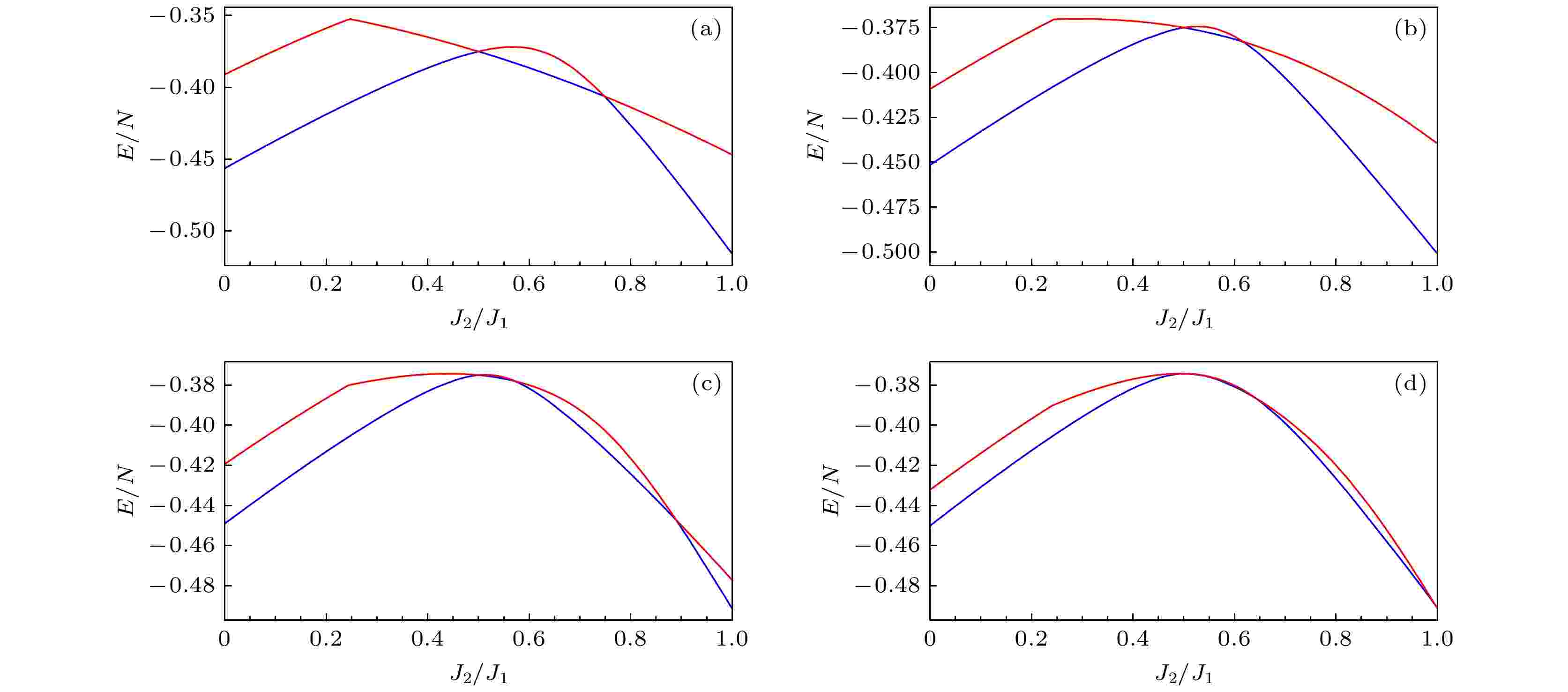
2021, 70 (23): 230701.
doi: 10.7498/aps.70.20210711
Abstract +
Studying quantum phase transitions through order parameters is a traditional method, but studying phase transitions by machine learning is a brand new field. The ability of machine learning to classify, identify, or interpret massive data sets may provide physicists with similar analyses of the exponentially large data sets embodied in the Hilbert space of quantum many-body system. In this work, we propose a method of using unsupervised learning algorithm of the Gaussian mixture model to classify the state vectors of the J1-J2 antiferromagnetic Heisenberg spin chain system, then the supervised learning algorithm of the convolutional neural network is used to identify the classification point given by the unsupervised learning algorithm, and the cross-validation method is adopted to verify the learning effect. Using this method, we study the J1-J2 Heisenberg spin chain system with chain length N = 8, 10, 12, 16 and obtain the same conclusion. The first order phase transition point of J1-J2 antiferromagnetic Heisenberg spin chain system can be accurately found from the ground state vector, but the infinite order phase transition point cannot be found from the ground state vector. The first order and the infinite order phase transition point can be found from the first excited state vector, which indirectly shows that the first excited state may contain more information than the ground state of J1-J2 antiferromagnetic Heisenberg spin chain system. The visualization of the state vector shows the reliability of the machine learning algorithm, which can extract the feature information from the state vector. The result reveals that the machine learning techniques can directly find some possible phase transition points from a large set of state vectorwithout prior knowledge of the energy or locality conditions of the Hamiltonian, which may assists us in studying unknown systems. Supervised learning can verify the phase transition points given by unsupervised learning, thereby indicating that we can discover some useful information about unknown systems only through machine learning techniques. Machine learning techniques can be a basic research tool in strong quantum-correlated systems, and it can be adapted to more complex systems, which can help us dig up hidden information.
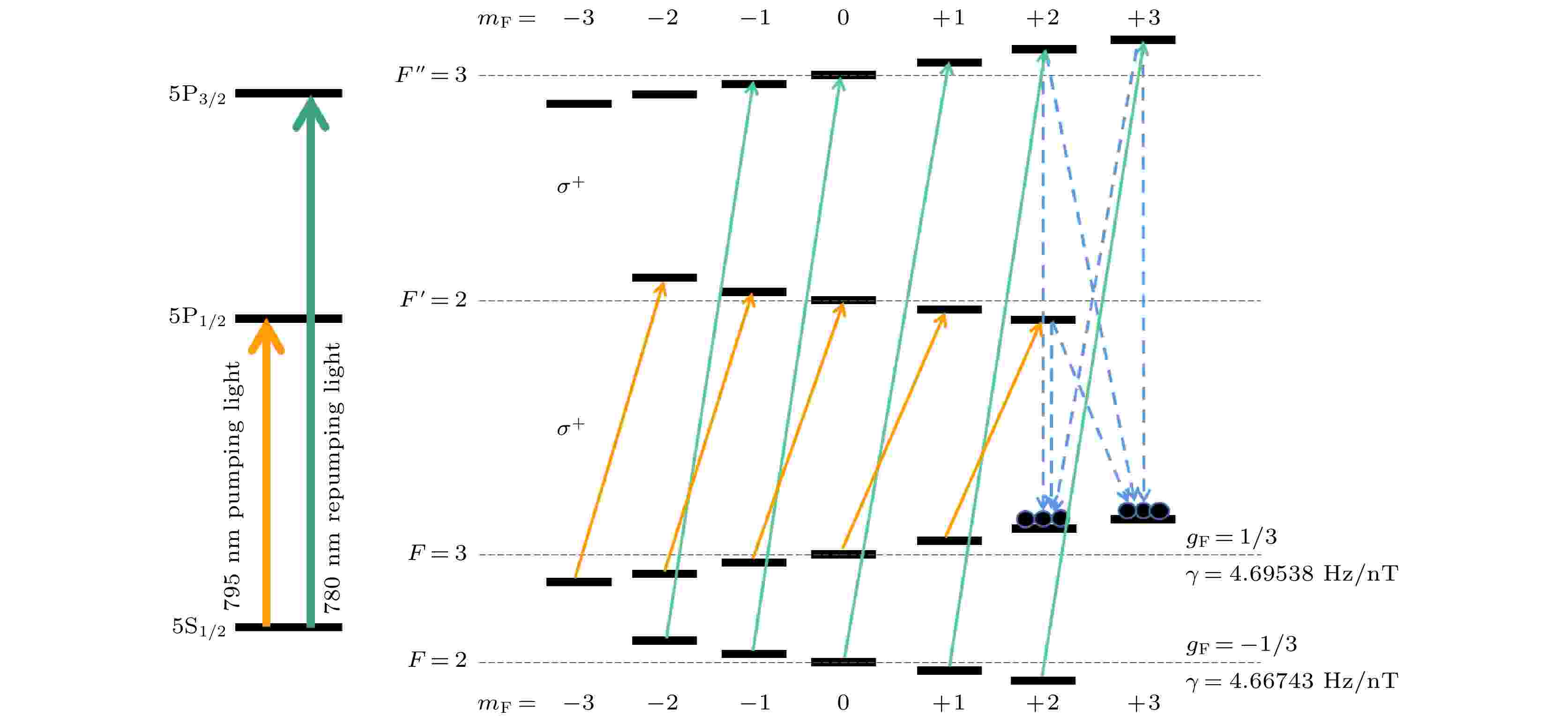
EDITOR'S SUGGESTION
2021, 70 (23): 230702.
doi: 10.7498/aps.70.20210920
Abstract +
For the experimental implementation of an optically pumped atomic magnetometer, the magnetic resonance signal with a narrow linewidth and a high signal-to-noise ratio (SNR) is required for achieving a high sensitivity. Using 795-nm laser as both the pumping and the probe laser, we compare the magnetic resonance signals from different rubidium atomic vapor cells and investigate the variations of magnetic resonance signals with temperature. Optimized magnetic resonance signal is achieved with a paraffin-coated rubidium atomic vapor cell. Then the 780-nm laser at rubidium D2 line is introduced as a repumping laser, and we explore the changes of linewidth and SNR of the magnetic resonance signal under different power of the pumping laser and the repumping laser. Owing to the 780-nm repumping laser beam, the signal amplitude of rubidium-85 magnetic resonance signal is improved remarkably because more rubidium-85 atoms are spin- polarized by the 795-nm pumping laser beam. At the same time, the linewidth of rubidium-85 magnetic resonance signal is roughly not broadened anymore. We realize a closed-loop optically pumped rubidium-85 atomic magnetometer with a bandwidth of ~1.2 kHz, and the sensitivity is calibrated to be ~245.5 pT/Hz1/2 only with the 795-nm pumping laser beam. Owing to the employment of the 780-nm repumping laser beam, the sensitivity is improved to be ~26.4 pT/Hz1/2 which is improved roughly by one order of magnitude. We also calibrate the measurement accuracy and deviation of a commercial fluxgate magnetometer by using the enhanced rubidium magnetic resonance signal.
THE PHYSICS OF ELEMENTARY PARTICLES AND FIELDS
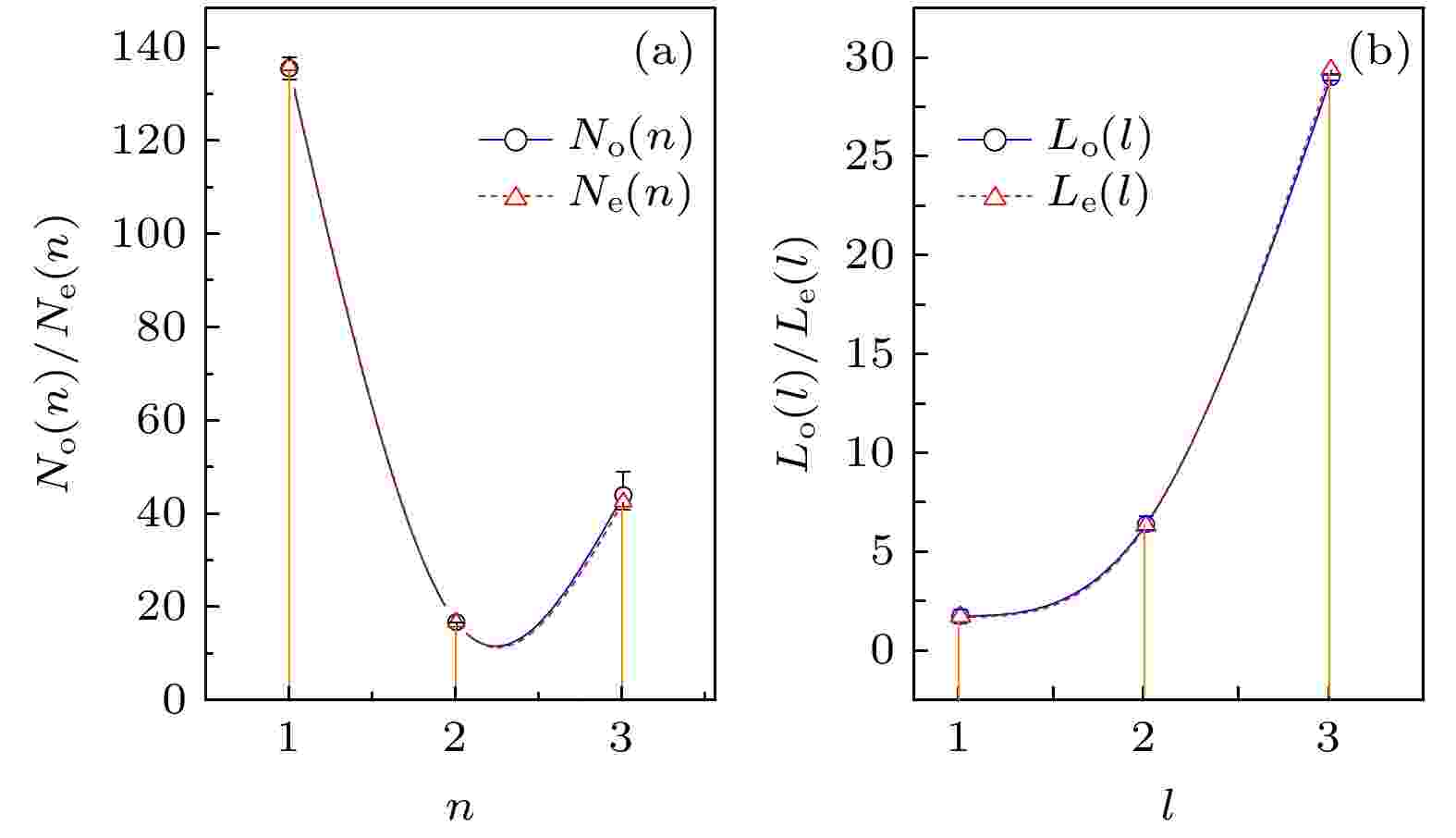
2021, 70 (23): 231201.
doi: 10.7498/aps.70.20210854
Abstract +
In this paper, we study the mass distribution of elementary fermions and find a set of empirical relations to describe the mass distribution of elementary fermions. This inspires us to investigate in depth the origin of elementary fermion mass hierarchies and generations. We present a theoretical model to explain why the elementary fermions have three generations and discuss the origin of the fundamental fermion mass hierarchies and spin.

2021, 70 (23): 231202.
doi: 10.7498/aps.70.20202101
Abstract +
ATOMIC AND MOLECULAR PHYSICS
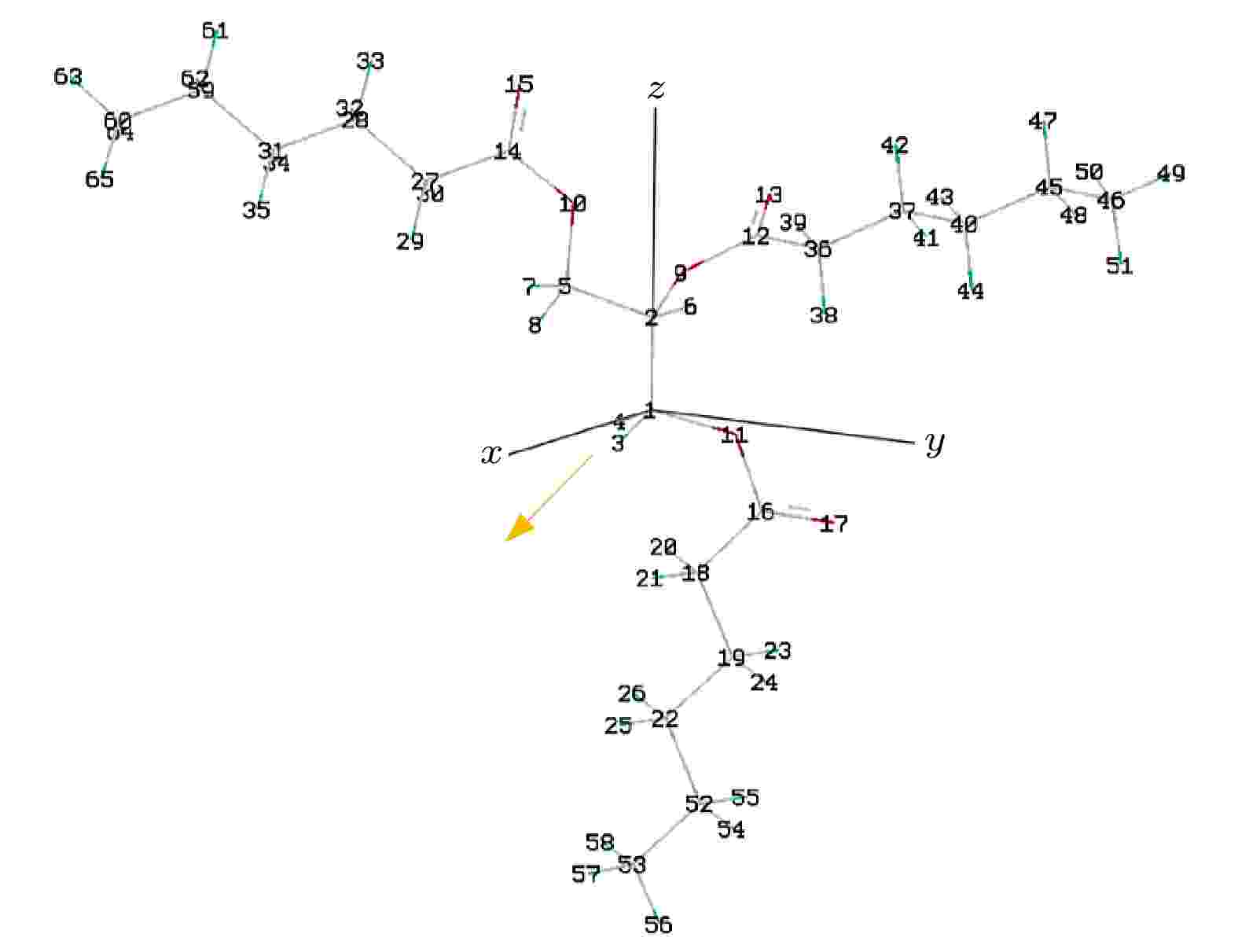
2021, 70 (23): 233101.
doi: 10.7498/aps.70.20211435
Abstract +
Short-medium chain saturated triglyceride is a low viscosity and degradable liquid dielectric material, which has potential applications in the field of transformer internal insulation. In this paper, the molecular properties of short-medium chain saturated triglycerides under the action of electric field are studied by using density functional theory and time-dependent density functional theory. The results show that the molecular bond length is obviously dependent on the electric field intensity, which is consistent with the shift of the infrared wave number peak. Under the same electric field, with the increase of the length of carbon chain, the dipole moment and polarity of the molecule increase correspondingly. When the electric field intensity is 109 V/m, the energy of the highest occupied molecular orbital of tricaprylin and tricaprin increases obviously, and the ionization potential decreases sharply. The difference in excitation characteristic between molecules is small, and the decrease of excitation energy is much smaller than that of ionization potential under the same electric field. The results are helpful in improving the understanding of discharge mechanism in ester dielectric, and provide the theoretical support for the performance improvement of natural ester insulating oil.
ELECTROMAGNETISM, OPTICS, ACOUSTICS, HEAT TRANSFER, CLASSICAL MECHANICS, AND FLUID DYNAMICS

2021, 70 (23): 234101.
doi: 10.7498/aps.70.20211223
Abstract +
Wurtzite ZnO and rutile TiO2 have important application value in solar cells, photocatalysts, self-cleaning coatings, etc. In addition, ZnO and TiO2 are crucial basic materials for the development of semiconductor spintronics devices due to room temperature ferromagnetism in the state of defects or doped specific elements. Many studies indicate that the magnetic, optical, and electrical properties of ZnO and TiO2 are affected by intrinsic defects (such as vacancies, interstitial atoms, etc.). Electron irradiation has the incomparable advantages over other particle beam irradiation, the defects produced by electron beam irradiation are mainly independent vacancy-interstitial atom pairs (Frenkel pairs), and there are no new doping elements introduced into the material during the irradiation by electron beam with energy of several MeV, that is, electron irradiation is a relatively “pure” particle irradiation method. On the one hand, since the displacement threshold energy values of different atoms are different from each other, the type of defect during electron irradiation can be controlled by the energy of the electron beam. On the other hand, the electron fluence can determine the concentration of defects. Therefore, various defects of different concentrations can be generated by electron irradiation, thereby studying the influences of related defects on the magnetic, optical, and electrical properties of ZnO and TiO2. However, simulation calculations related to electron beam irradiation damage are relatively scarce. Therefore, in this work, the electron beam irradiation damage is taken as a research topic and the related theoretical simulation calculations are carried out, which lays a theoretical foundation for subsequent experimental researches. The size and the distribution of radiation damage (dpa) caused by point source electrons and that by plane source electrons with different energy values in ZnO and TiO2 are simulated and calculated through the MCNP5 program combined with the MCCM algorithm. The calculation results show that O atoms and Zn atoms can be dislocated when the electron energy values are greater than 0.31 MeV and 0.87 MeV in ZnO, respectively; while in TiO2, O atoms and Ti atoms can be dislocated when the electron beam energy values are greater than 0.12 MeV and 0.84 MeV, respectively. The dpa caused by point source electrons is mainly distributed in the longitudinal direction, and attenuates quickly in the lateral direction; on the contrary, the dpa caused by plane source electrons first increases and then decreases with the augment of the electron incidence depth, and the unevenness of the dpa distribution becomes more serious with the increase of the electron energy. Therefore, for each of ZnO and TiO2, the dpa will be relatively even distribution when the thickness of the sample is about 0.25 mm. Furthermore, the calculation results of the electron energy deposition show that the size of the energy deposition area is closely related to the electron beam energy. At the same time, with the increase of the electron beam energy, the position where the maximum energy deposition appears gradually moves to the inside of the sample, and the entire energy deposition area has a tendency to lean forward.
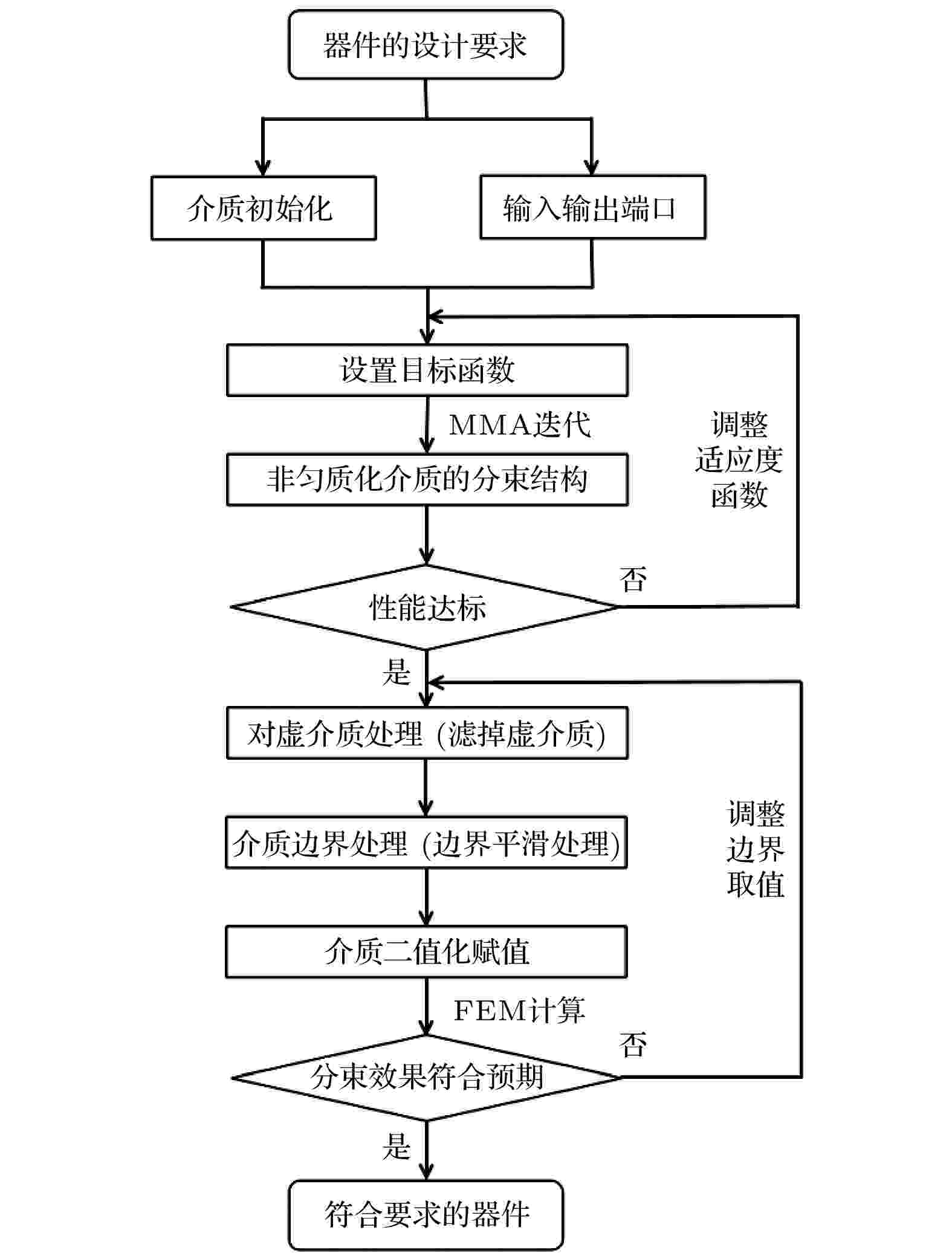
EDITOR'S SUGGESTION
2021, 70 (23): 234102.
doi: 10.7498/aps.70.20210117
Abstract +
Photonic chip is a kind of integrated device that uses light as a carrier for information transportation and processing. Owing to its advantages of small size, lightweight, and low power consumption, photonic chip has become the most popular research topic nowadays. The beam splitter is a vital part of on-chip integration. For conventional beam splitting elements, Y-type and tree-branch output are the main elements, which are usually realized by interference principles. However, it is appropriate only for simple conventional beam splitter because the propagation direction of light cannot achieve large angle deflection. In the case of relay loading, optical amplification, pumping, and frequency upconversion, the vertical loading is often required without affecting the main optical path. To complete the large-angle deflection beam splitting, one needs to add a mirror to realize it or use a right-angle mirror structure for geometric double-sided reflection and splitting in traditional ways, but these structures are relatively complicated and difficult to complete on-chip integration. Based on previous work on inversely designed multi-channel wavelength routers and wide spectrum efficient focusing devices by using the intelligent algorithm, and combining the years of research on the coherent superposition theory of multi-scattering of the disordered medium, a large angle beam splitter that can realize from the near-infrared band is designed through using the intelligent algorithm. The beam splitter structure is based on AMTIR-1 glass, the part to be etched is air. The composition of AMTIR-1 is Ge33As12Se55. And the size of the structure is only 1 μm × 2 μm. The beam splitter can achieve 180° linear separation of beams in a range from 800 nm to 1100 nm, the beam splitting ratio of the entire waveband is approximately 1∶1, and the gross beam splitting efficiency is stable between 85% and 92%. Compared with several conventional structures with the same size, the efficiency of the beam splitter designed by this algorithm is higher. At the same time, the algorithm has the advantages of fast computation speed and small computation amount, and it can be completed only by ordinary personal computers without the support of hardware such as workstations. This intelligent algorithm can also be applied to the design of various passive photonic devices such as optical polarization splitters, routers, optical isolators, etc., providing an idea and reference for the design of integrated micro-nano photonic devices on high-density sheets.
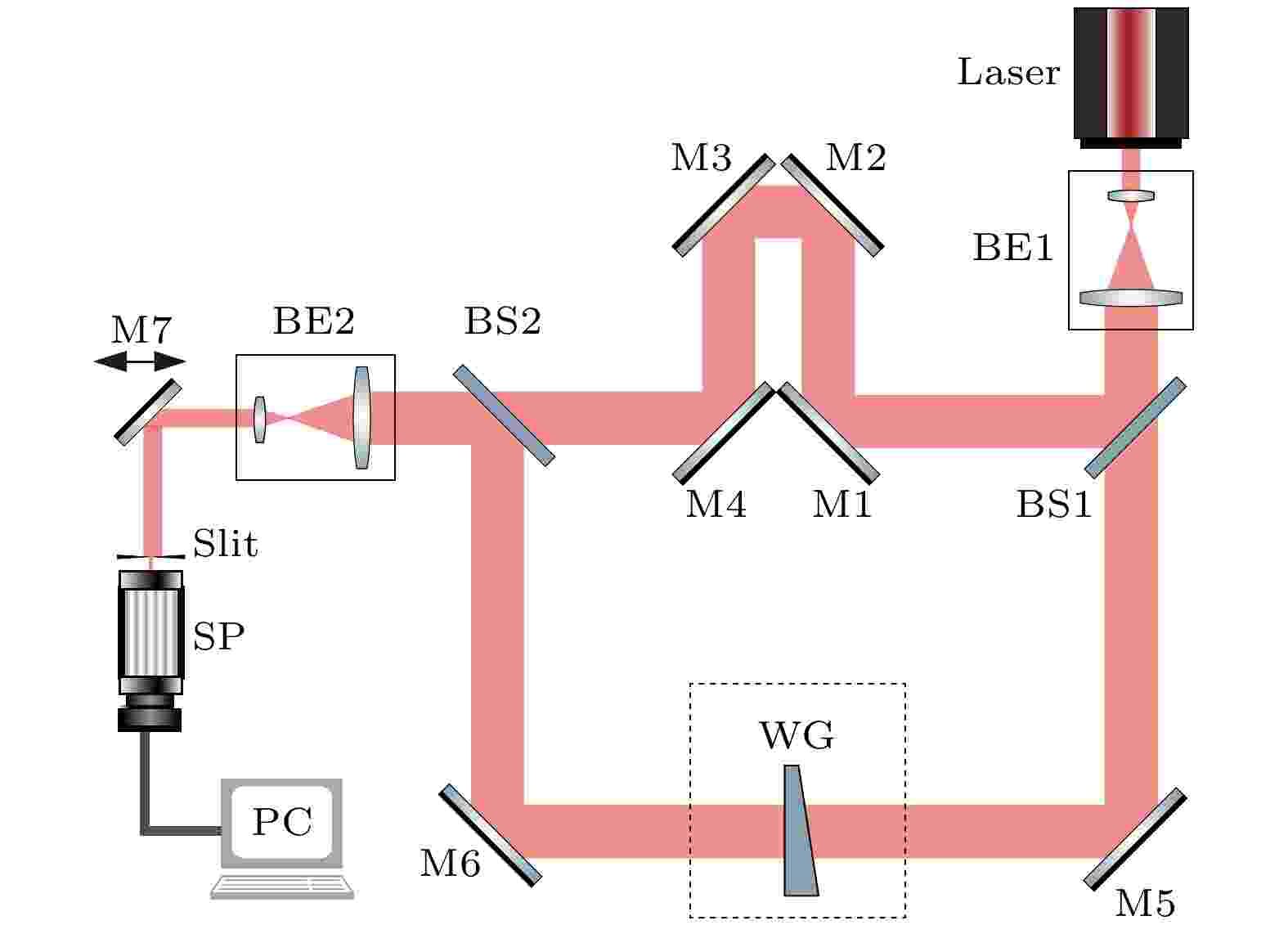
EDITOR'S SUGGESTION
2021, 70 (23): 234201.
doi: 10.7498/aps.70.20210996
Abstract +
Optical elements such as stretcher, compressor and thick lenses will lead to spatially-dependent temporal properties of a large aperture laser pulse, which is called spatiotemporal coupling (STC). Beyond pure temporal characterization measurement, a measure of spatiotemporal coupling distortion based on spatial-spectral interference is proposed in this study. Full one-dimensional spatiotemporal coupling characteristics can be obtained in a single-shot measurement, and the complete spatiotemporal coupling characteristics in the near field can be obtained by scanning along another spatial dimension. The spatiotemporal coupling characteristics introduced by the wedge glasses are measured, and the experimental results accord well with the theoretical results.
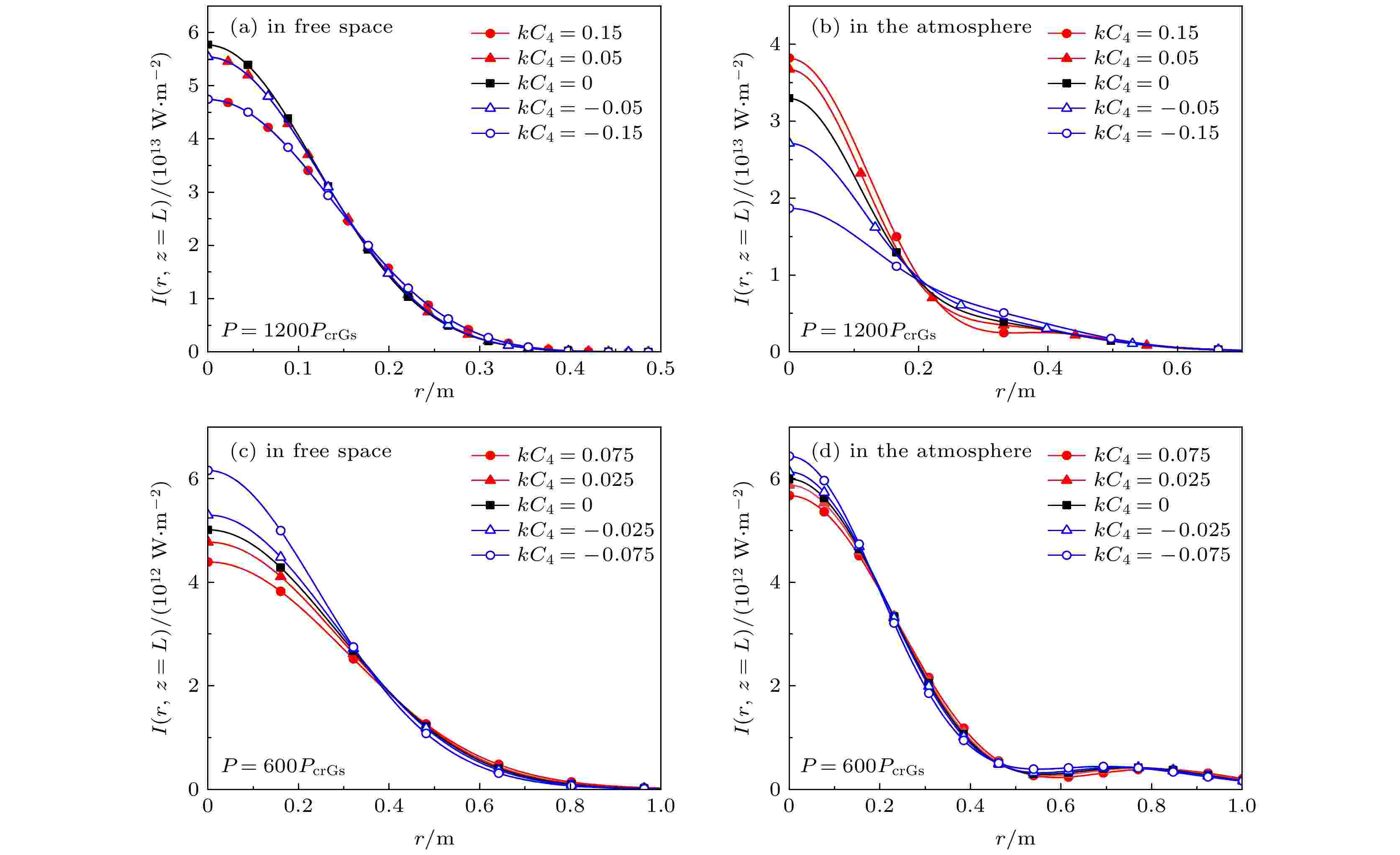
EDITOR'S SUGGESTION
2021, 70 (23): 234202.
doi: 10.7498/aps.70.20211226
Abstract +
For laser ablation propulsion’s applications in space (e.g., space-debris removal, etc.), the laser power is well above the critical power for self-focusing in the atmosphere. Therefore, the self-focusing effect on the beam quality is very significant. In addition, a high-power laser beam is usually accompanied with spherical aberration due to nonlinear effects in its generation process. In this paper, the influence of spherical aberration on the beam quality of high-power laser beams propagating upwards in the atmosphere is studied by using numerical simulation. It is shown that for the large beam size case, the target intensity may be improved by applying the positive spherical aberration. However, for the small beam size case, the target intensity may be improved by using the negative spherical aberration. Furthermore, a laser beam with a large size is more suitable for laser ablation propulsion’s applications in space than that with a small size. Owing to the linear diffraction effect and the nonlinear self-focusing effect, there exists optimal beam power to maximize the target intensity. The formula of the optimal beam power is fitted for the large beam size case in this paper. On the other hand, the focal shift appears due to diffraction, self-focusing and spherical aberration, which results in a degradation of the beam quality on the target. For the large beam size case, to move the actual focus to the target and improve the beam quality on the target, the formula of the modified focal length is also derived in this paper. The results obtained in this paper are of important theoretical significance and practical value.

EDITOR'S SUGGESTION
2021, 70 (23): 234203.
doi: 10.7498/aps.70.20211208
Abstract +
Correlated imaging, or ghost imaging, has aroused the interest of researchers in recent years. Optical phased array (OPA) as a high-integration, low-cost, and high-speed light illuminating device is suitable for application in correlated imaging. Here we use a two-dimensional 4 × 4 silicon integrated OPA in which each channel has an independently tunable phase shifter. In this work, the new features of correlated imaging given by periodic pseudo-thermal light field of OPA are demonstrated. The correlated imaging with biperiodic light field of OPA under different conditions including darkroom, thermal noise and phase perturbation without splitter is reported; the image stitching based on biperiodic light field of OPA is also presented. This work is of significance in promoting the progress of imaging technology and expanding the application of OPA.
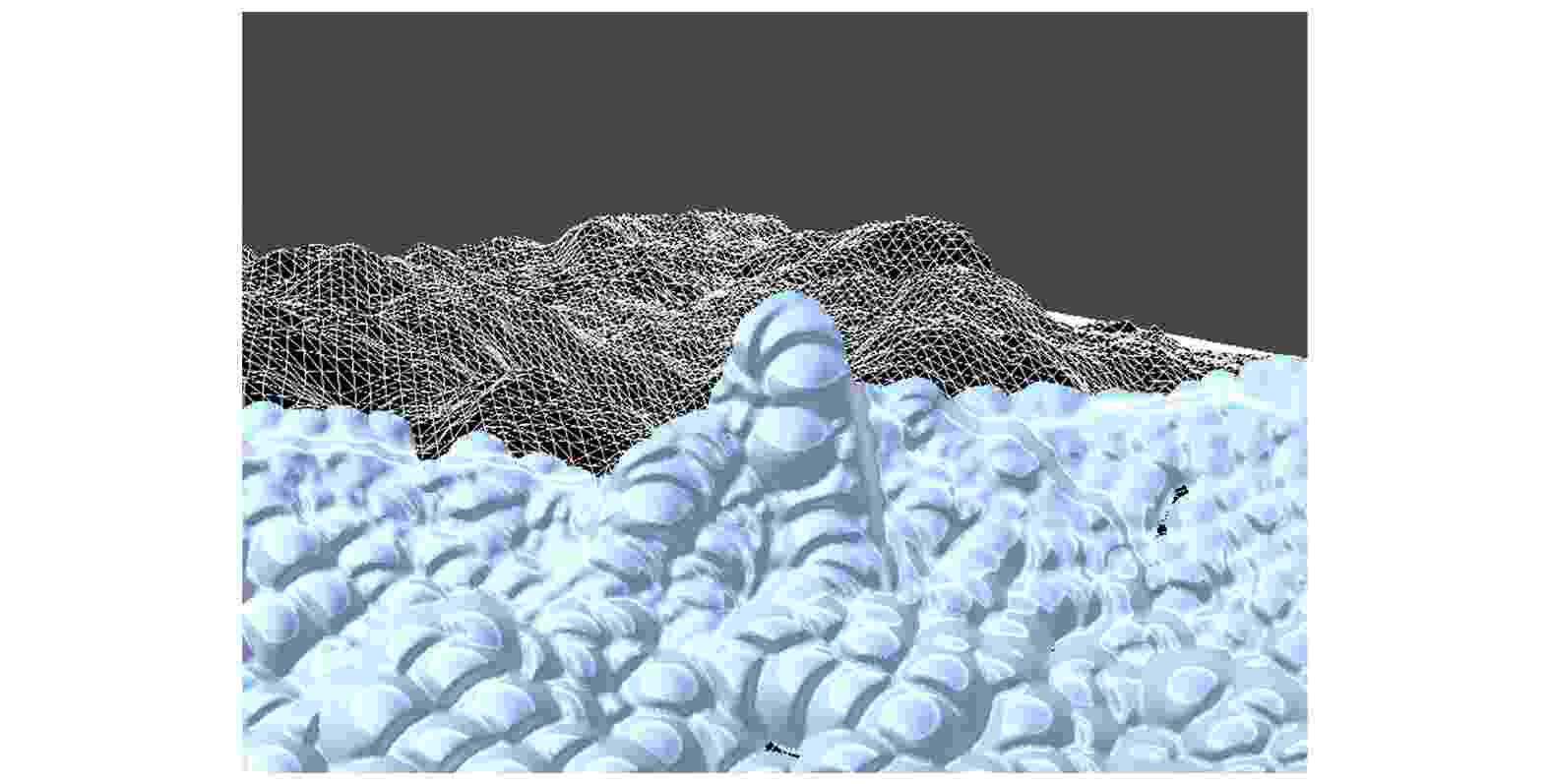
2021, 70 (23): 234701.
doi: 10.7498/aps.70.20211251
Abstract +
The reality and real-time performance have always been the research hot-point of fluid simulation. Aiming at the unstable fluid surface motion in the scenes with complex terrain, in this paper, we propose an adaptive fluid velocity control force calculation model based on terrain difference, and a stable SPH numerical model for solving the shallow water equations is established. In this proposed numerical model, firstly we reduce the simulation domain from three-dimensional space to two-dimensional surface for reducing calculation quantity, and the water depth is represented by the density of particles at the meantime. Secondly, to ensure that the number of neighborhood particles is stable within a fixed range and to improve the accuracy of simulation, we apply a variable smoothing length to our numerical model. Then, an adaptive fluid velocity control force calculation model is introduced based on terrain difference, in which the velocity and position of particles are corrected by calculating the terrain difference caused by particle movement between each time step. The coordinates on terrain used for the calculation of terrain difference are dynamically chosen by the density of the particles. To improve the real-time performance of simulation, a screen space fluid rendering method is used to refrain the extraction and reconstruction of fluid surface. The numerical calculation and fluid surface rendering both load on the GPU for parallel execution. The simulation result shows that the proposed method can effectively improve the unstable fluid surface movement in scenes with complex terrain while reaching a real-time interaction level. The density and pressure are evenly distributed during the simulation.
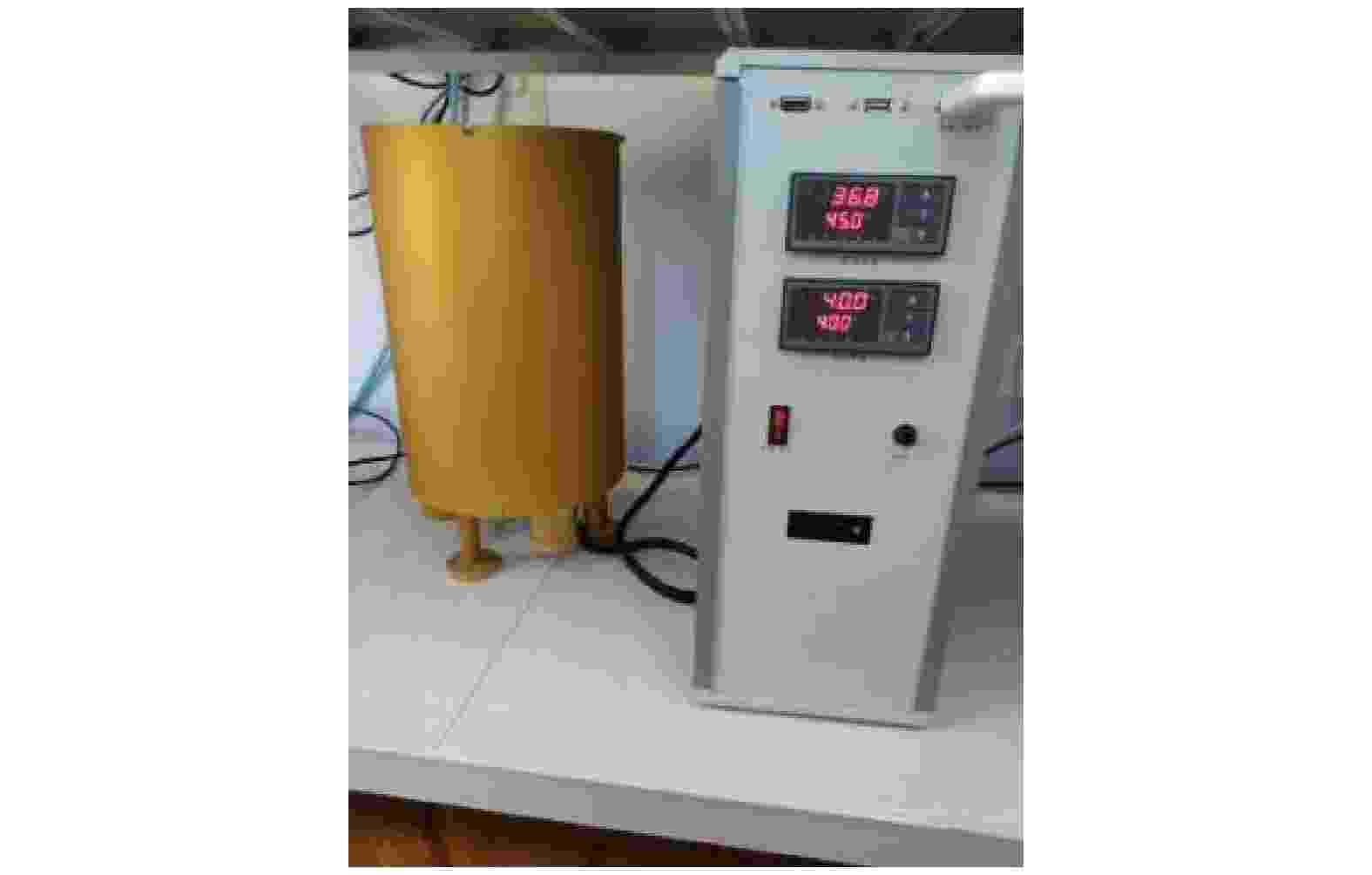
2021, 70 (23): 234702.
doi: 10.7498/aps.70.20210794
Abstract +
Taking advantage of high-precision microbarograph data, satellite, ground measured data and GDAS data, the characteristics of gravity waves during the cold vortex heavy rainfall in Northeast China on 29−30 July 2020 are analyzed. The results show that the gravity waves initiate this heavy rainfall. In 2−4 h before the heavy rainfall, there appear the precursor activities of gravity waves with a period of about 128 min. During the heavy rainfall, the periods of gravity waves concentrate in a range of 120−180 min. During the development of convective storms, there occur gravity waves with periods in a range of 128−256 min. And severe storms spark the gravity waves with shorter periods (8−64 min). The relationship between rainstorm and gravity wave is interactive. When severe storms develop, there occur thunderstorm high pressure, cold pool and out-flow boundary. In the front of cold pool, there is formed a flow convergence. The convergence and divergence of air flow propagate forward, forming gravity waves and finally triggering the rainstorm. The characteristics of precursor activities of gravity waves may play a positive role in warning heavy rainfall during the cold vortex in Northeast China.
PHYSICS OF GASES, PLASMAS, AND ELECTRIC DISCHARGES

2021, 70 (23): 235201.
doi: 10.7498/aps.70.20211230
Abstract +
The interaction between noble metal nanowires can induce the local surface plasmonic resonance effect, thereby enhancing the distribution of electric field in the nanostructures, which is of very important significance in improving the fluorescence characteristics and enhancing the sensitivity of sensors. In this study, we design several types of tetramers based on precious metals Ag nanostructures, including cylindrical and prismatic Ag tetramers, and by changing the arrangement and the rotation angle of prism nanowires, we simulate the rotation-angle dependent electric field distribution and electric field intensity of X component , and also discuss the physical mechanism of the relationship between the resonant peak position of absorption spectrum and the change of mode volume. The results show that in the Ag nanowires tetramer structure, the electric field in the cylindrical structure is not enhanced obviously, but the electric field in the prismatic structure is greatly enhanced, and an electric dipole resonance mode is produced in the gap between tetramers. The polarization of plasma resonant cavity revels that the morphology plays a decisive role in generating the hot spots, After changing both the combination mode of tetramer nanowires and the rotation angle of the four-prism, the local surface exciton resonance of the unrotated asymmetric tetramer structure is most ideal and has resonance intensity higher than the that of symmetrical four-prism structure. Therefore, our results provide a structural model and theoretical parameters for the enhancement of electric field intensity by local surface plasmon resonance effect.
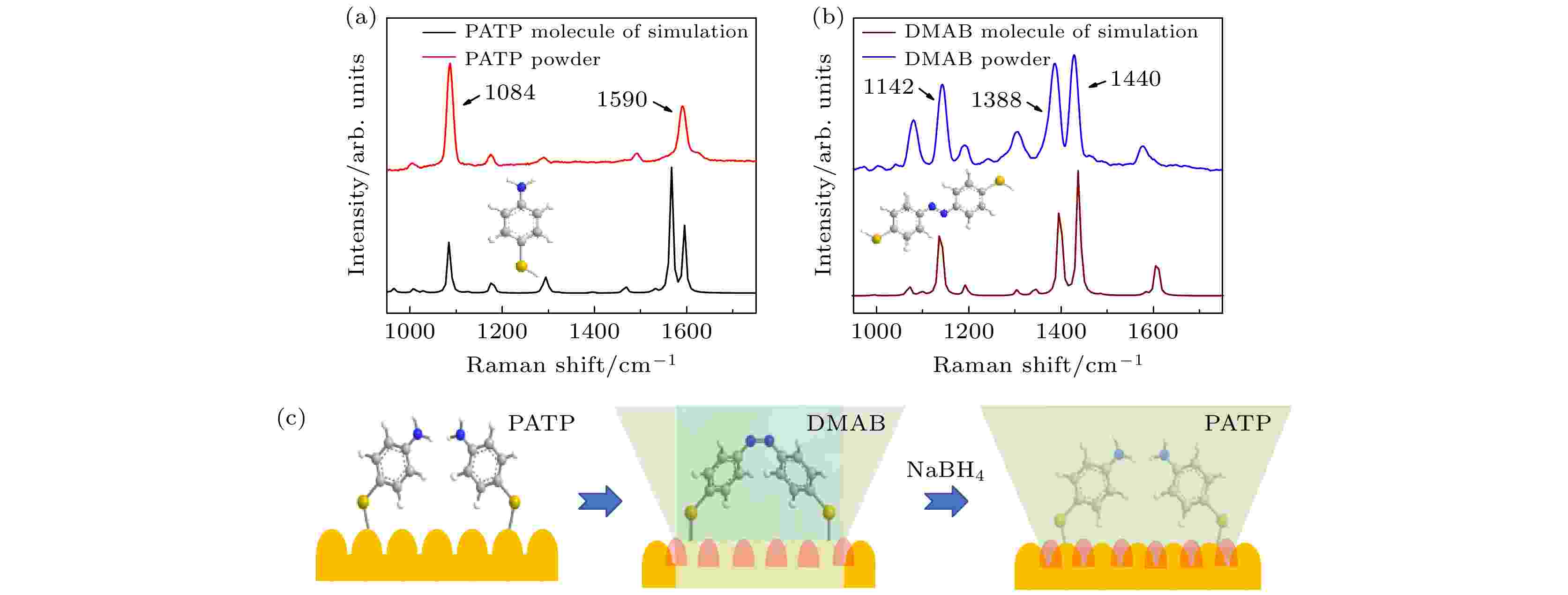
2021, 70 (23): 235202.
doi: 10.7498/aps.70.20210424
Abstract +
The surface plasmons produced by the collective oscillation of conduction electrons in metal nanostructures can redistribute not only the electromagnetic field spatiotemporally, but also the excited carriers. Various effects caused by surface plasmons, including enhanced electromagnetic fields, local heating, excited electrons and excited holes, can drive chemical reactions. In this work, the regularly-arranged Au nanoarray catalytic substrate is prepared based on an anodic aluminum oxide template. When the excitation light of a specific wavelength irradiates on the substrate, a large number of regularly-arranged local surface plasmon enhancement regions will be generated on its surface. By taking advantage of surface enhanced Raman spectroscopy, the 4,4′-dimercaptoazobenzene is synthesized by the photocatalytic reaction of p-aminothiophenol as a probe driven by local surface plasmon. After that, the sodium borohydride is introduced in situ. Under the same experimental conditions, the product 4,4′-dimercaptoazobenzene is driven by plasma to produce p-aminothiophenol again. This research work will achieve the drawing and erasing of molecular graphics on a micro scale and a nano scale, as well as information encryption, reading and erasing, which has a strong application value.

2021, 70 (23): 235203.
doi: 10.7498/aps.70.20210945
Abstract +
The plasma current (Ip
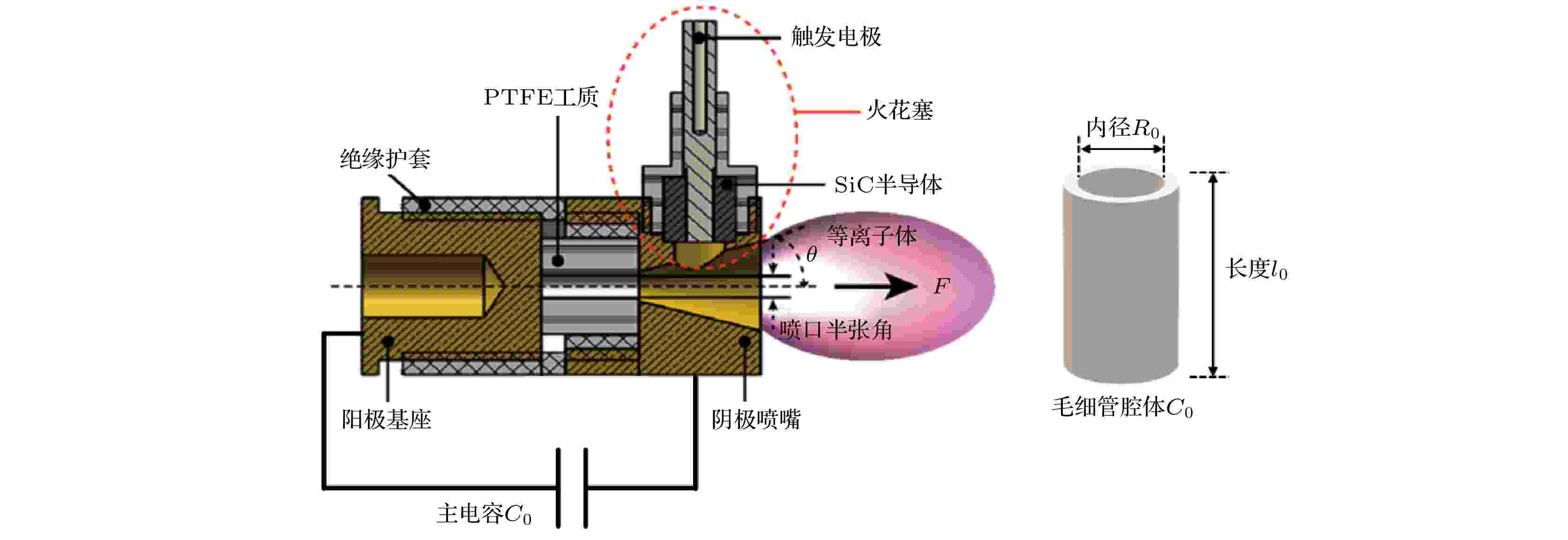
EDITOR'S SUGGESTION
2021, 70 (23): 235204.
doi: 10.7498/aps.70.20211198
Abstract +
Capillary discharge based pulsed plasma thrusters have great prospects of applications in in-orbit maneuvering of
CONDENSED MATTER: STRUCTURAL, MECHANICAL, AND THERMAL PROPERTIES

2021, 70 (23): 236501.
doi: 10.7498/aps.70.20211285
Abstract +
Thermal rectification effect refers to an asymmetric heat transfer phenomenon (namely, the amount of heat flux depends on the direction of temperature gradient). A two-segment bar made of two materials that have thermal conductivities with different temperature-dependence, can realize the thermal rectification effect. In the present paper, we propose to use porous structure on the bulk material to modify the thermal conductivity of bulk material. It is found that the thermal rectification effect can be enhanced by the porous structure. The finite element method and effective medium approximation are used to analyze the influence of porosity on the thermal rectification ratio of the two-segment system. The calculation results are consistent with each other. Under low temperature bias, the effect of the porosity is weak, while its influence becomes very significant when the temperature difference is high. Usually, thermal rectification ratio decreases if the porous structure is made on the segment whose thermal conductivity increases with temperature increasing. If the porous structure is made on the segment with negative temperature-dependent thermal conductivity, an optimal porosity can be found. For low porosity, the forward heat flux keeps almost unchanged while the reverse heat flux decreases by more than half, and the thermal rectification ratio can be increased to twice or more than thrice that in the case of no porous structure. For a fixed temperature difference, the influence of porosity on the thermal rectification ratio increases with the augment of the power exponent value.
INTERDISCIPLINARY PHYSICS AND RELATED AREAS OF SCIENCE AND TECHNOLOGY
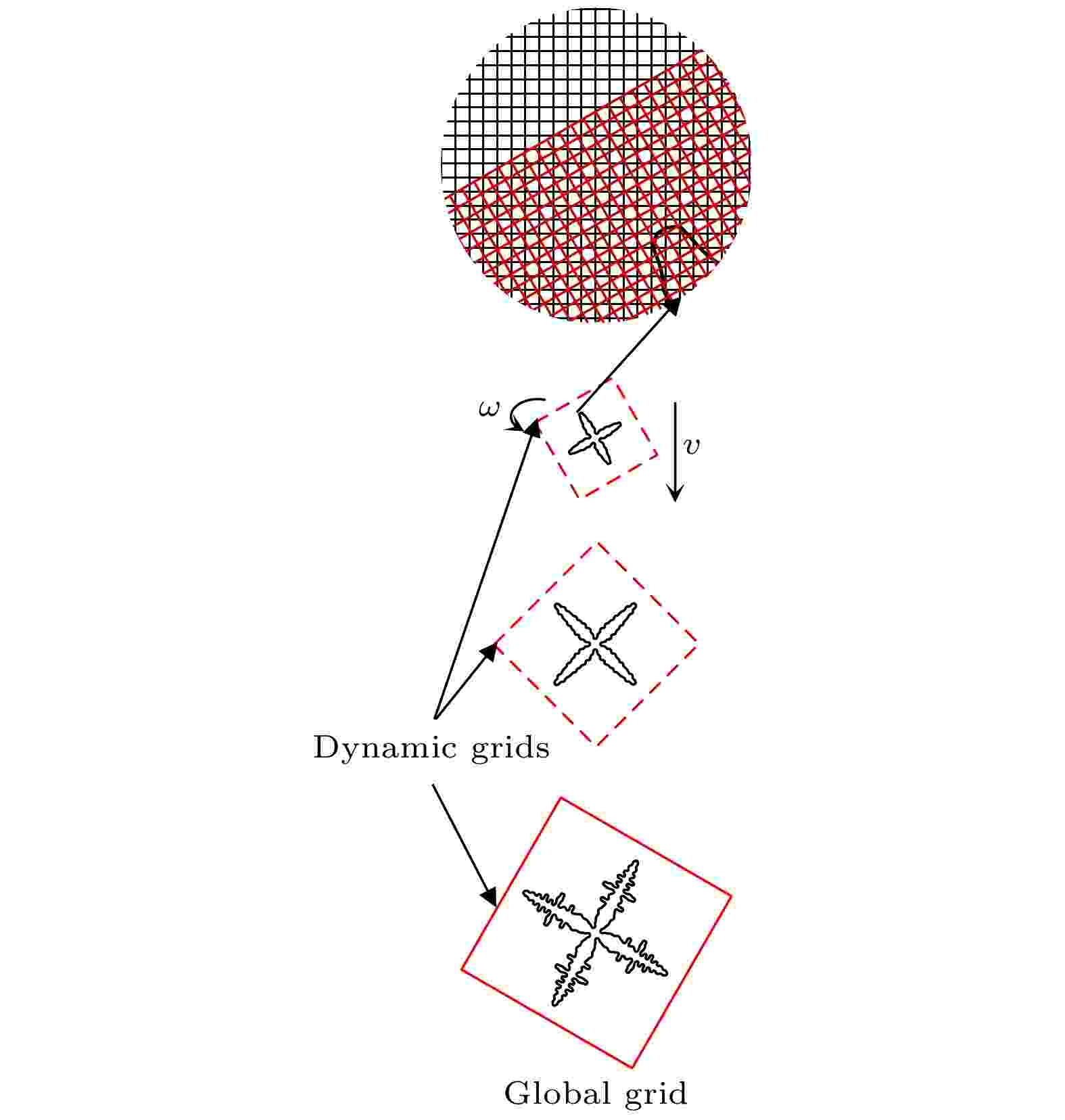
2021, 70 (23): 238101.
doi: 10.7498/aps.70.20211292
Abstract +
In the alloy solidification process, the movement behavior of free dendrites in the melt is one of the key issues in studying the formation process of the alloy solidification structure. The cellular automata-lattice Boltzmann coupling model has become a main numerical model for numerical simulation of solidification microstructure in recent years. In this paper, cellular automata and lattice Boltzmann model for simulating dendrite growth are improved to simulate the movement of equiaxed grains in undercooled melt. In the improved model, the Galilean invariant momentum exchange method is used to calculate the fluid force, the motion equation of the center of mass is solved to calculate the motion displacement of the dendrite, the motion of the dendrite is realized through the dynamic mesh technology, and the rigid sphere model is used to deal with the collision of the dendrite. The settlement of a single dendrite in the undercooled melt of Al-4.7% Cu alloy, the settlement of two round particles in the Newtonian fluid, and the elastic collision of two dendrites are all simulated by this model. The simulation results show that this model can maintain the morphology of dendrites well in the process of calculating dendrite growth motion, and this model can calculate the collision process of irregular dendrites. The movement of dendrite disturbs the melt around it, resulting in a significant change in the concentration of melt around it, which affects the growth of dendrite and aggravates the asymmetry of dendrite growth.
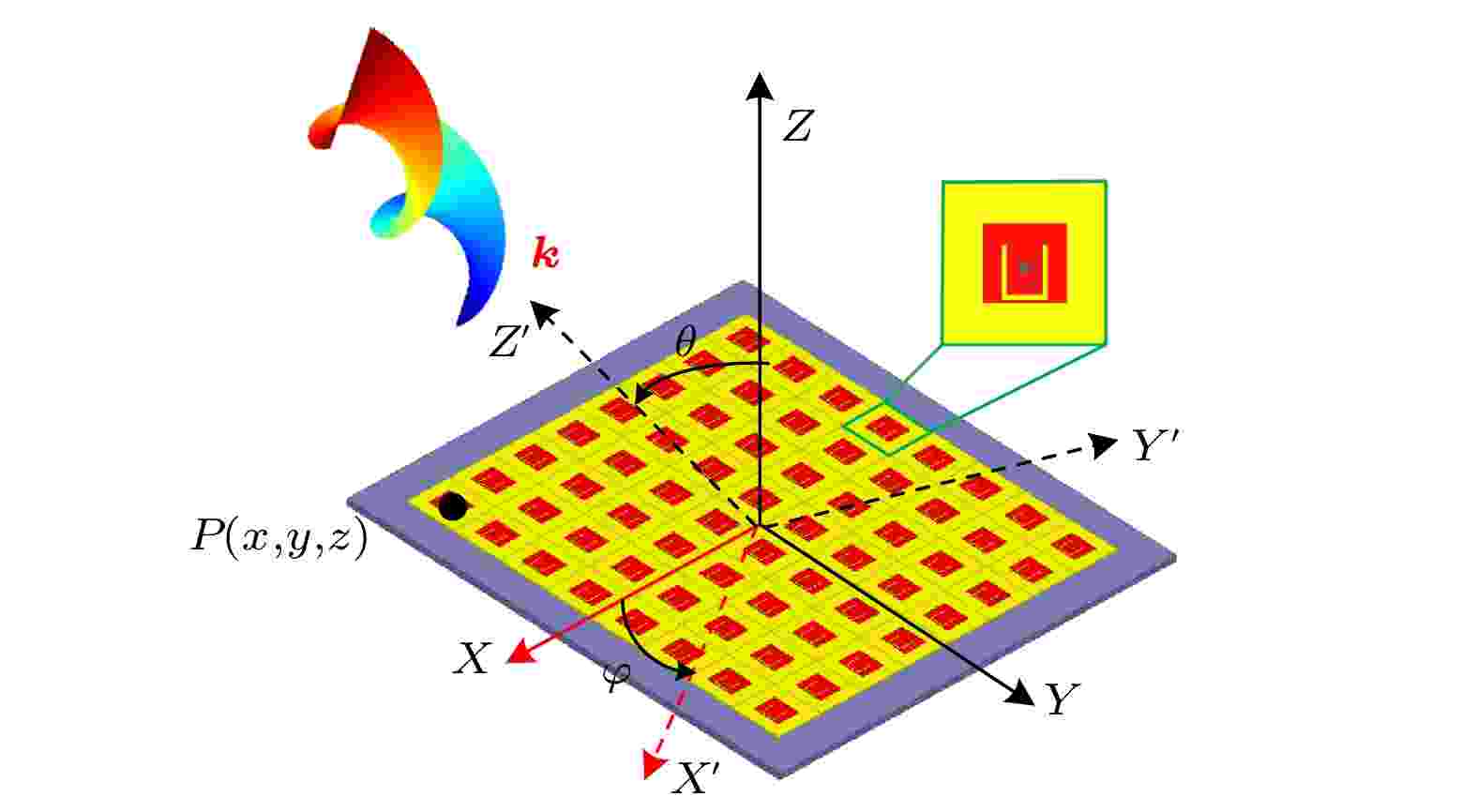
2021, 70 (23): 238401.
doi: 10.7498/aps.70.20211119
Abstract +
Orbital angular momentum (OAM) vortex electromagnetic waves can provide a new degree of freedom for information modulation at a physical level, which has great prospects of applications in the fields of wireless communication and radar imaging. The application of beam scanning techniques of phased array to OAM vortex electromagnetic wave can increase its communication coverage and expand the detection coverage of vortex radars. Firstly, in this paper, the principle of generating the beam steering vortex electromagnetic beam is discussed and the compensated phase formula for generating beam steering OAM beams is given by planar phased array. Secondly, considering the advantages of phased array antennas in beam scanning and OAM reconfigurability, a planar phased array with 8 × 8 antenna elements at 10 GHz is designed and fabricated. The performances of OAM beam steering and mode reconfigurability are verified. Finally, the performance changes of the deflecting OAM vortex beam at different scanning angles are discussed and analyzed. Simulations and measurements both show that there exist pattern distortion problems when steering angle of OAM beam becomes large. In this paper, the variation of the OAM mode purity is also studied when the scanning angle and the OAM mode number change. The results show that the planar phased array antennas can effectively generate the beam steering OAM vortex beams in a certain angle range. Hence, this paper can provide a reference for the OAM vortex electromagnetic wave communication and the vortex radar in the future.
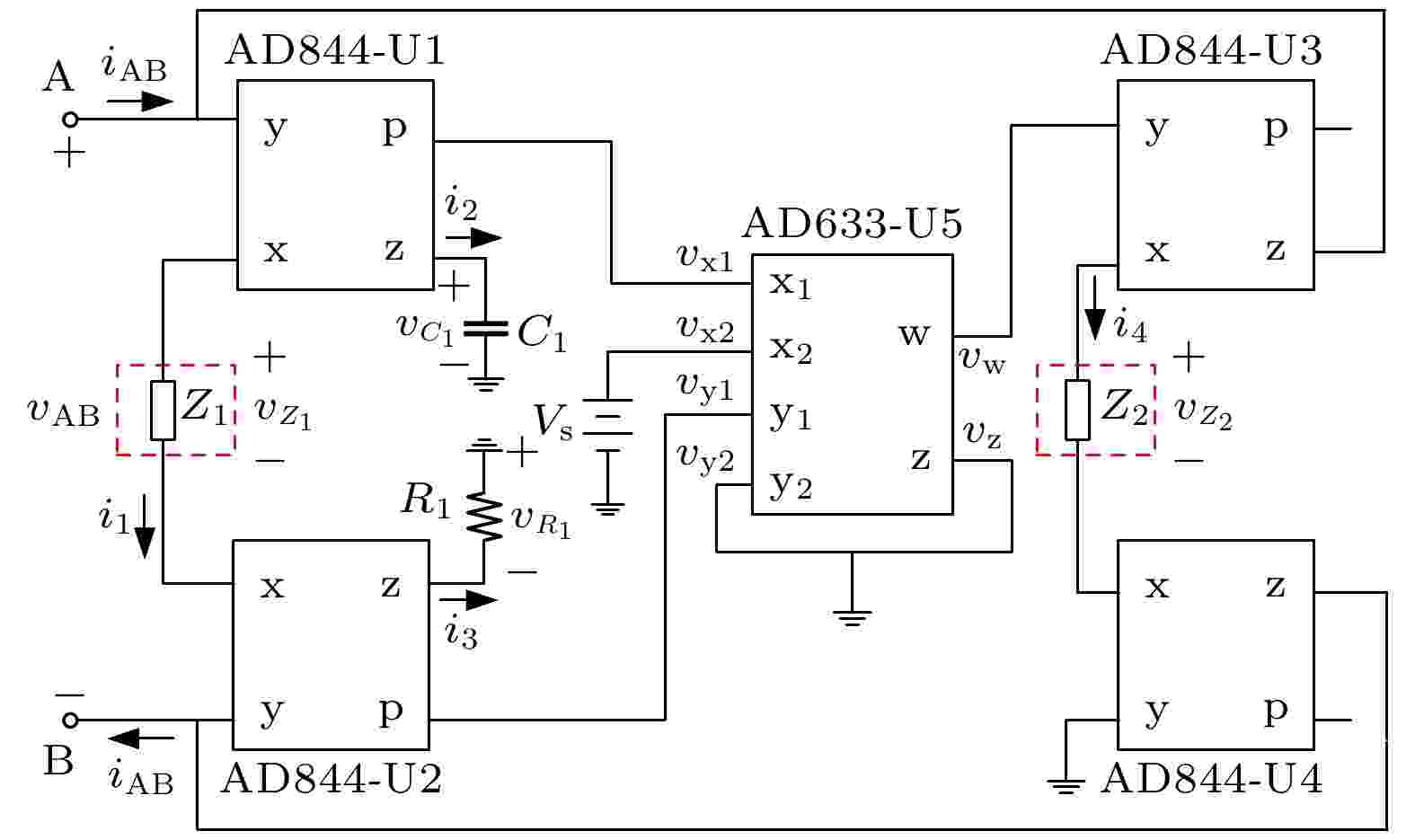
EDITOR'S SUGGESTION
2021, 70 (23): 238501.
doi: 10.7498/aps.70.20211021
Abstract +
Memristors, memcapacitors and meminductors are nonlinear circuit components with memory effects and belong to memory element (mem-element) system. Since there are many shortcomings in the existing available commercial memristor chips, and the physical realizations of memcapacitor and meminductor hardware are still in early stages, it is still difficult for researchers to obtain hardware mem-elements for research. In order to solve this problem, it is still necessary to build effective equivalent models of mem-elements to facilitate the research on their characteristics and applications. In this paper, a novel floating mem-element modeling method is proposed by connecting different passive circuit component to a universal interface while keeping the circuit topology unchanged. Compared with other floating universal mem-element models, the model built in this paper has simple structure, high working frequencies, thus making proposed models easier to implement. The feasibility and effectiveness of the mem-elements models based on the universal interface are successfully verified through theoretical analysis, PSPICE simulation results and hardware experimental results.
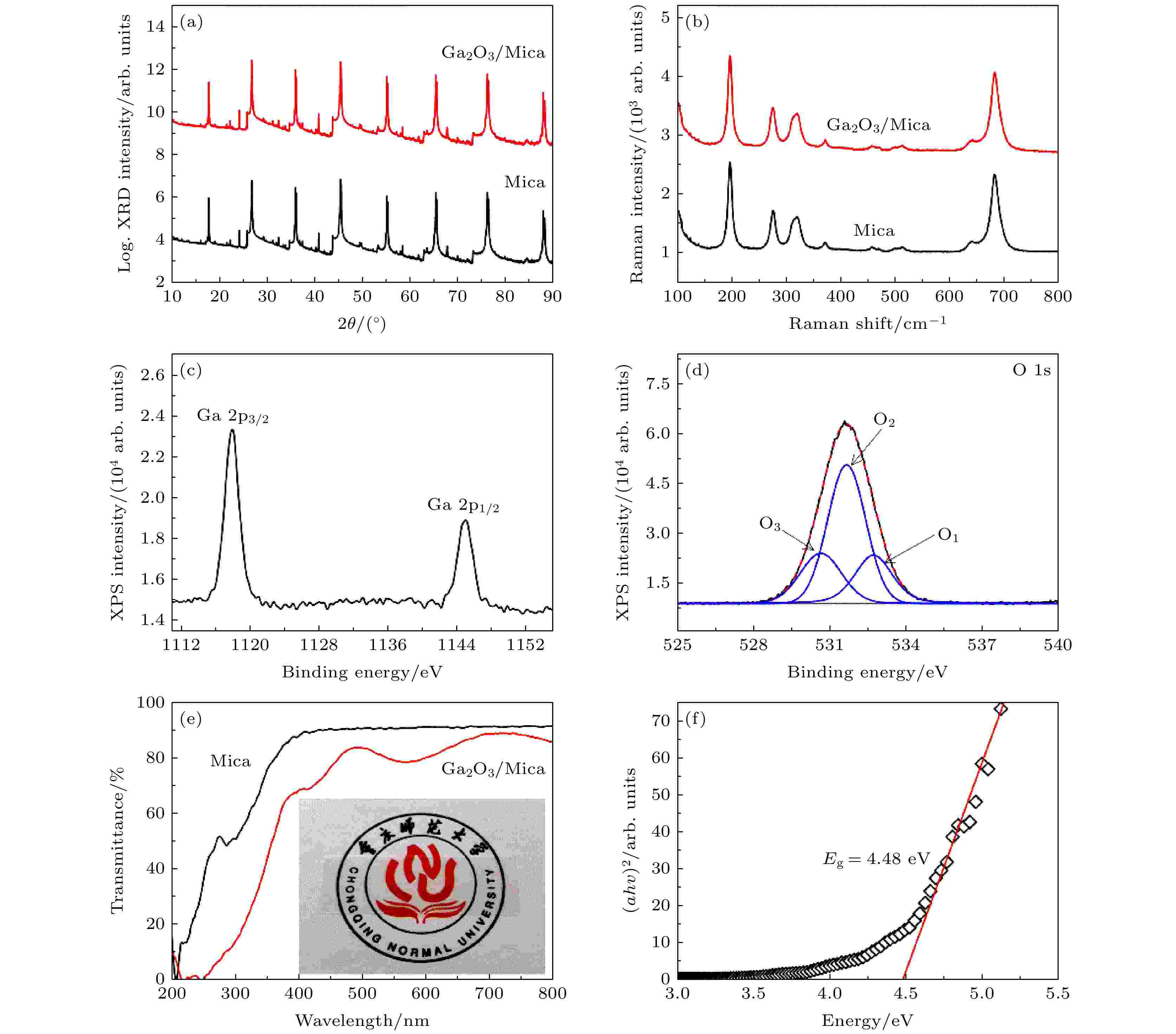
2021, 70 (23): 238502.
doi: 10.7498/aps.70.20211039
Abstract +
Solar-blind deep-ultraviolet (UV) photodetectors (PDs) based on the super-wide bandgap semiconductor material Ga2O3 is one of the hot topics of current research, but how to prepare high-performance Ga2O3-based solar-blind PDs in the field of flexible and transparent optoelectronics still faces challenges. In this work, an amorphous Ga2O3 film with high transmittance is grown on a flexible mica substrate by using the radio frequency magnetron sputtering technology. On this basis, using AZO as an electrode material, a transparent metal-semiconductor-metal (MSM) structured solar-blind deep ultraviolet photodetector based amorphous Ga2O3 film is fabricated, and the performance of PD in the planar state and after multiple bending are systematically compared and analyzed. The results show that the amorphous Ga2O3 based transparent PD has ultra-high visible light transparency and shows good solar-blind ultraviolet photoelectric characteristics. The responsivity of the PD under 254 nm light is 2.69 A/W, and the response time and the recovery time are 0.14 s and 0.31 s, respectively. After bending 300 times, the PD has a photoresponse behavior similar to its planar state, and the performance of the PD has no obvious attenuation phenomenon, showing good flexibility and stability. This work proves that AZO can be used as the electrode material of the next generation of flexible and visible light transparent Ga2O3 based photodetectors, and provides a reference for developing the high-performance flexible and transparent solar-blind deep ultraviolet photodetectors.
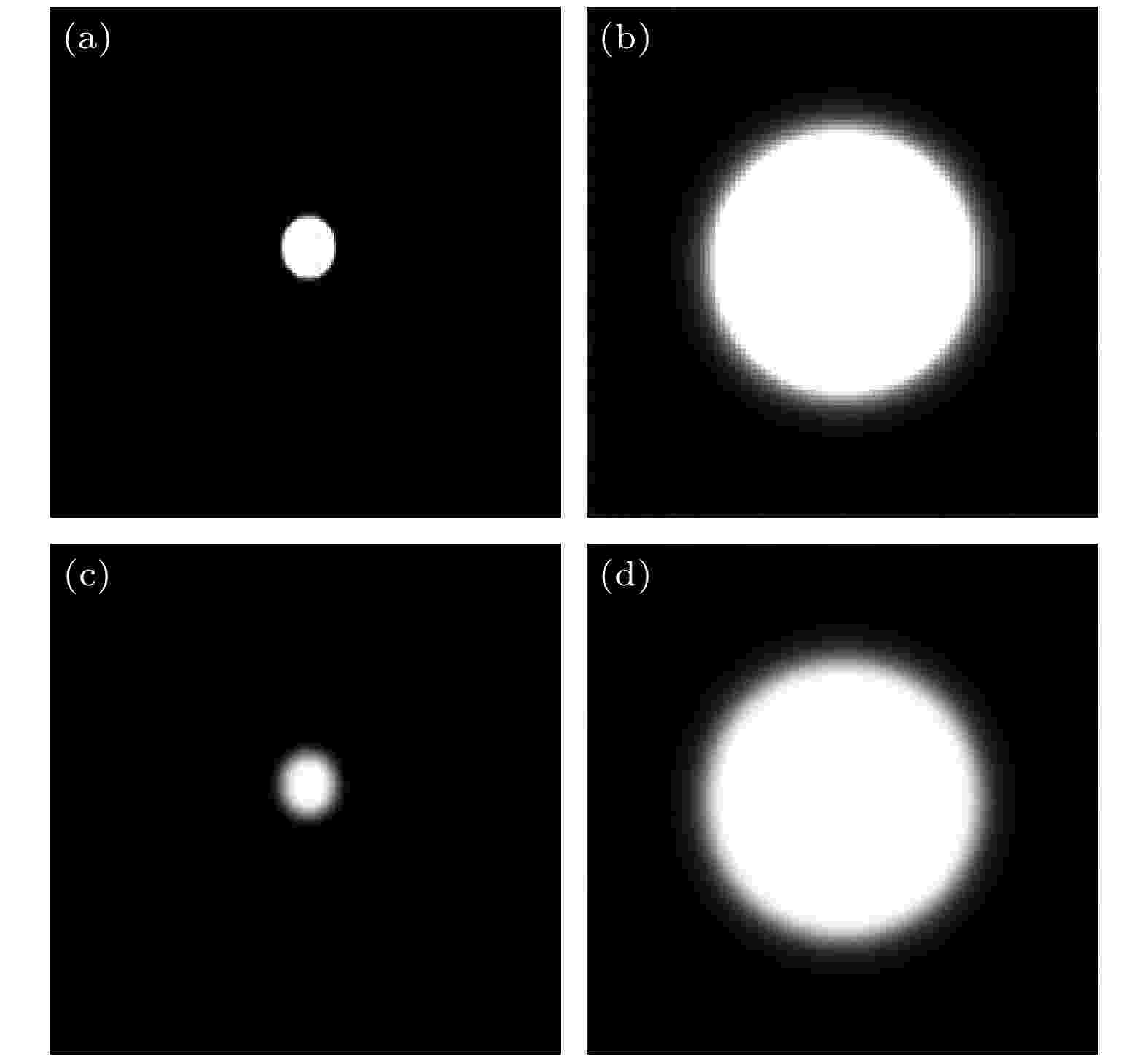
2021, 70 (23): 238701.
doi: 10.7498/aps.70.20211022
Abstract +
In order to obtain the internal fine structure of biological tissues and living cells, the microscopic imaging technology is required to be capable of microscopy. In the wide-field fluorescence microscopy with dynamic speckle illumination, a series of dynamically changing speckle patterns are used to illuminate a biological sample in the whole field. The fluorescence sectioning images of sample’s three-dimensional structural are obtained by extracting intensely changing fluorescence signals in the focal plane. In this paper, the process of obtaining fluorescence sectioning images by the fluorescence microscopy is studied by theoretical analysis and simulation. Two main factors affecting the imaging quality of fluorescence sectioning image are analyzed, which are the number of original fluorescence images recorded by CCD and granularity of diffuser. The simulation results indicates that the imaging quality of fluorescence sectioning images first increases and then tends to saturation with the number of original fluorescence images increasing. It first increases and then decreases with the graininess of diffusers increasing. Considering the imaging quality and imaging time, when the number of original fluorescence images is 60 that is used to extract fluorescence sectioning images, and the granularity of diffuser is about 1000, the high spatial resolution fluorescence sectioning images with contrast higher than 85% can be obtained. Theoretical analysis and simulation research provide a theoretical basis and guidance for designing the system structure, implementing and optimizing the wide-field fluorescence microscopy with dynamic speckle illumination.
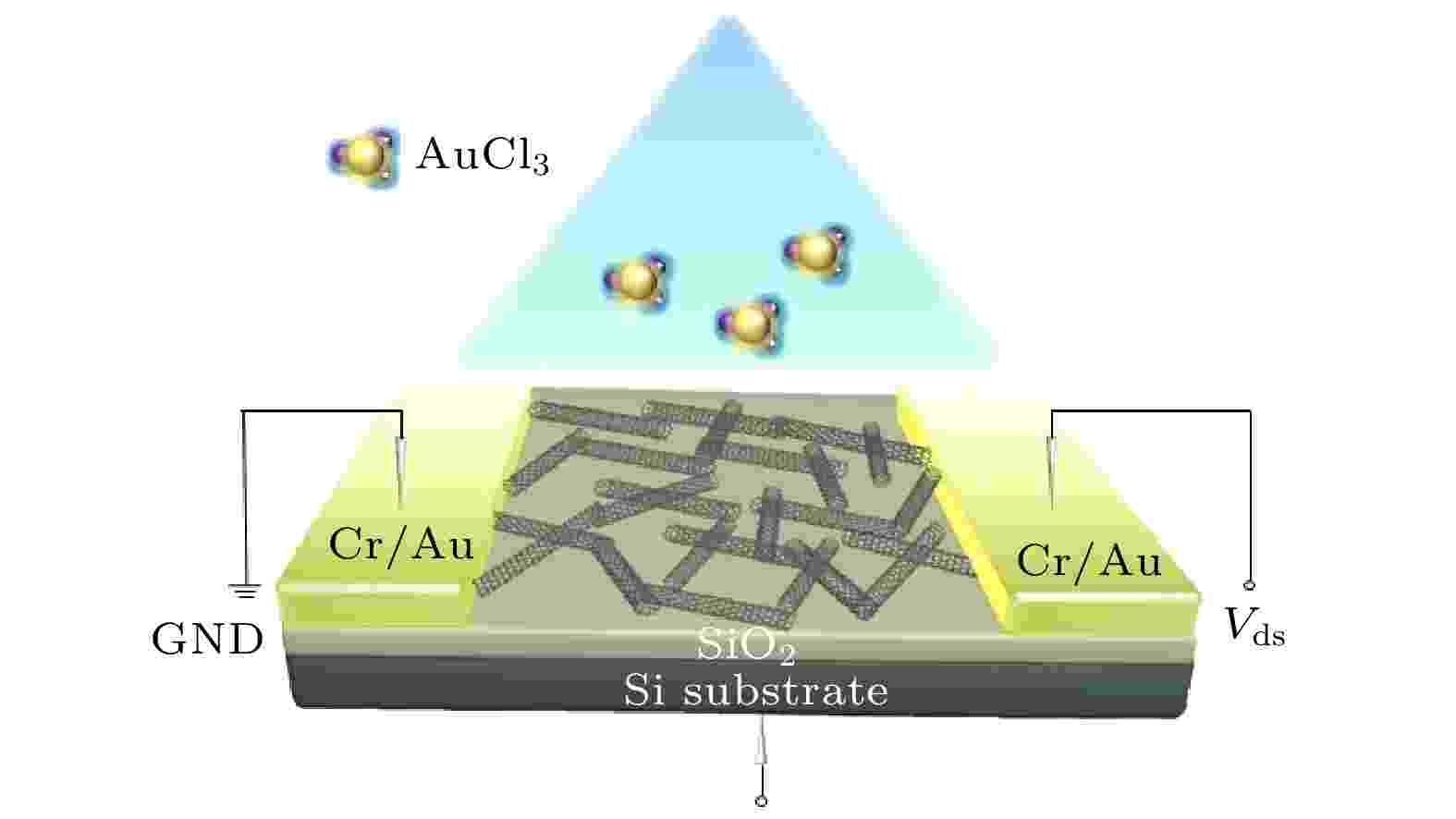
Modulation of electrical properties in carbon nanotube field-effect transistors through AuCl3 doping
2021, 70 (23): 238801.
doi: 10.7498/aps.70.20211026
Abstract +
Carbon nanotube-based field-effect transistors (CNFETs), as a new generation of nanodevices, are still difficult to apply to actual logic circuits due to the lack of a mature threshold voltage control mechanism. Here in this work, a feasible and large-scale processing surface doping method is demonstrated to effectively modulate the threshold voltage of CNFETs through the p-type doping effect of gold chloride (AuCl3). A comprehensive mapping from electrical parameters (Ion/Ioff, Vth and mobility) to doping concentration is carefully investigated, demonstrating a p-doping effect induced by surface charge transfer between Au3+ and carbon nanotube networks (CNTs). Threshold voltage of CNFETs can be effectively adjusted by varying the doping concentration. More importantly, the devices doped with low concentration AuCl3 exhibit good electrical properties including greatly improved electrical conductivity, 2–3 times higher in mobility than intrinsic carbon nanotubes. Furthermore, the effects of annealing on the electrical properties of the AuCl3-doping CNFETs are studied, demonstrating that the p-type doping effect reaches the optimized state at a temperature of 50 °C. Finally, first-principles calculation method is used to verify the doping control mechanism of Au3+ to carbon nanotubes. This research provides important guidance for realizing large-area low-power logic circuits and high-performance electronic devices in the future.

2021, 70 (23): 238802.
doi: 10.7498/aps.70.20211234
Abstract +
Cu(In,Ga)Se2 (CIGS) solar cell is a kind of highly efficient thin film solar cell, for which Ga ratio (Ga/(Ga+In), GGI) gradient engineering is an efficient approach to achieving high open circuit voltage under no short circuit current loss. In this work, we firstly evaluate the room and the strategies for improving the device performance of the CIGS solar cells based on the comparison among their theoretical efficiency limits. Then we investigate the different schemes of “V” type GGI gradient and their effects on device performance through machine learning and device simulation. Based on these studies, we optimize the scheme of “V” type GGI gradient and obtain a high efficiency of 26% from device simulation. The carrier kinetics for the effect of modifying GGI gradient on device performance are analyzed. This work provides an approach to optimizing the GGI gradient to obtain highly efficient CIGS solar cells, which is referable for experimental optimization.












